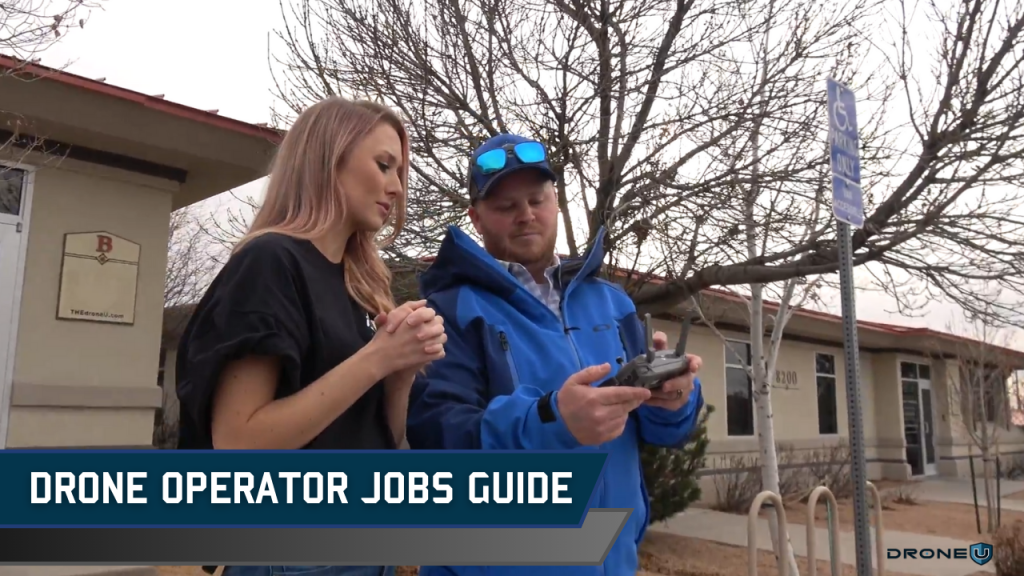
Do you want to find out what drone pilot jobs are in demand in 2025?
If you’re nodding along, then get ready for a treat!
In this article, we’ll talk about the most promising drone operator jobs available in the market in 2025 and how to take the first step toward landing your dream job.
According to Fact MR, the global drone market is booming. It is projected to reach $223.66 billion by 2034.
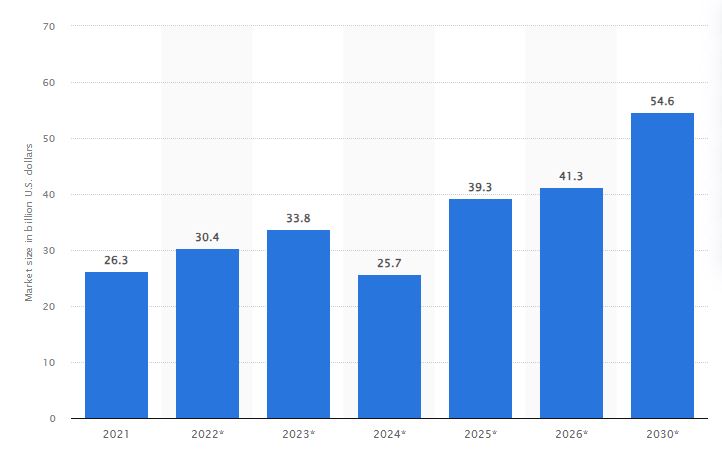
The trend of drone market size worldwide from 2021 to 2030 (Source: Statista)
This explosive growth leads to a multitude of opportunities for drone pilots.
To get a better understanding of drone pilot job roles, let’s begin with the basics.
What Does a Drone Pilot Do?
Imagine a drone pilot as the captain of a tiny flying machine. Their job is to make sure this high-tech aircraft takes off, zips around safely, and lands without a hitch. Here’s what they typically do:
1. Fly Safe
Just like airline pilots, drone pilots check their aircraft before each flight. They also plan their course to avoid any bumps in the road (or sky!) and keep an eye out for other flyers during the mission.
The drone pilot needs to be just as careful as a real pilot. This means checking the drone before flying, taking off and landing smoothly, and avoiding any bumps or crashes during the flight. They also need to be aware of their surroundings and follow the rules, just like bigger airplanes do.
2. Taking Great Pictures and Videos (or Other Cool Stuff)
Many drone pilots use their skills to capture amazing visuals. This could be anything from stunning aerial shots for movies to capturing data for construction sites. Think of them as flying cameramen or data collectors!
Drones are often used to take amazing pictures and videos from up high. So, the pilot might be responsible for operating a camera mounted on the drone, getting the perfect shots for movies, real estate listings, or even inspecting buildings.
3. Planning the Adventure
Drone missions don’t happen by accident. The pilot does plenty of homework beforehand. Right from figuring out the best flight path to checking the weather and following necessary compliance to ensure safe flight operations, the drone pilot makes sure that everything goes smoothly.
So, where can you find drone pilots buzzing around? They work in all sorts of places, including:
- Filming movies and TV shows
- Helping with construction projects
- Showing off houses for real estate agents
- Keeping an eye on crops for farmers
- Assisting search and rescue teams
- Inspecting bridges and buildings
If being a drone pilot sounds exciting, check out the certification process in your area.
Getting the proper training to fly these machines safely and legally is important. If you see drone pilots working in fields, filming movies, or helping firefighters, that’s just a taste of the many jobs they can do!
Bonus Tip: Before starting your entry-level drone pilot career, consider taking up the New Pilot Bundle training which teaches you everything from safe flight operations to earning your part 107 certification.
How to Become a Drone Pilot?
The first step to becoming a commercial drone pilot is acquiring a license from your country’s regulatory body. In the United States, this falls under the Federal Aviation Administration (FAA) with their Part 107 Small Unmanned Aircraft System (sUAS) Rule. This license ensures you possess the knowledge and skills for safe and responsible drone operation according to airspace regulations.
Eligibility:
- Be at least 16 years old.
- Pass a background check.
- Be able to read, speak, understand, and write English fluently.
Testing Process:
- Pass an aeronautical knowledge exam offered by an FAA-approved testing center. The exam covers airspace regulations, drone safety, and emergency procedures.
- Study materials are readily available from the FAA website and various third-party sources.
Click Here to Learn More about Earning Your Part 107 License
Now let’s unfold the markets and industries where drone pilots are in high demand.
Drone Pilot Jobs: Understanding the Demand
Right from capturing stunning aerial footage for the media and entertainment industry to providing insights through aerial inspections in construction and agriculture, the possibilities for drone operator jobs are vast and diverse.
Let’s take a look at the top drone jobs available in the market today
1. Drone Jobs in Real Estate
Real estate is undoubtedly one of the most prevalent industries that hire drone pilots. The primary goal is to work with realtors who represent and sell high-end properties.
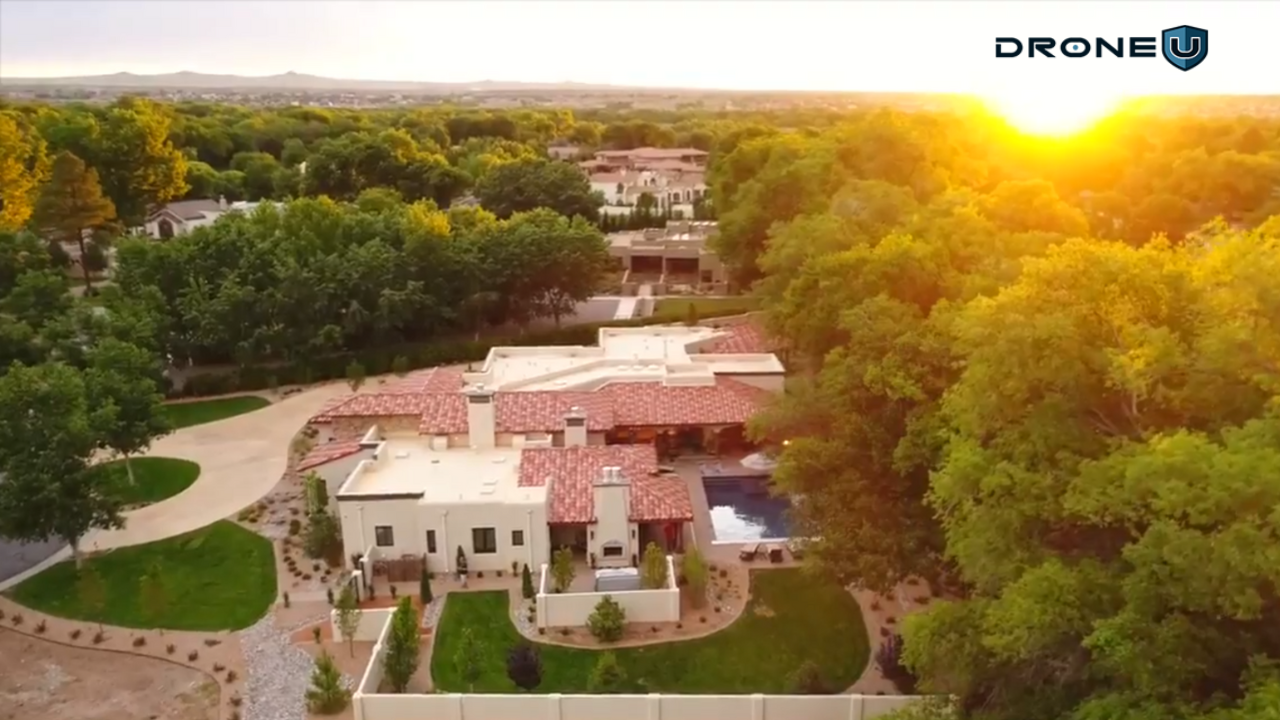
Using drones for aerial photography and videography is an effective way to market properties, and it can give listings an edge over the competition.
Real estate agents and property owners are always looking for fresh ways to showcase their properties, and that’s where you, the real estate drone pilot, come in.
Your job as a real estate drone pilot is to capture aerial stills and videos of a property for sale, which the real estate agent will use in marketing and promotion.
To get drone flying jobs in real estate, you must have the skills to capture smooth videos and incredible photos from your eyes in the sky. Once you acquire the right skills, you can offer your services to clients and help market their properties effectively.
Merits and Demerits of Choosing the Real Estate Industry
Being a drone pilot in real estate can be exciting and profitable because there’s a lot of demand and cool technology. However, it also comes with its share of challenges.
| Merits | Demerits |
| 1. High demand for aerial footage and photography in real estate marketing. | 1. Stringent regulations and licensing requirements for drone operation. |
| 2. Flexible work schedule and potential for freelance opportunities. | 2. Weather conditions can limit flight operations and affect productivity. |
| 3. Ability to capture unique perspectives and showcase properties effectively. | 3. Initial investment in high-quality drones and equipment can be expensive. |
| 4. Opportunity to work outdoors and explore various properties and locations. | 4. Competition from other drone pilots and aerial photography services. |
Versatility of Drone Work in Real Estate
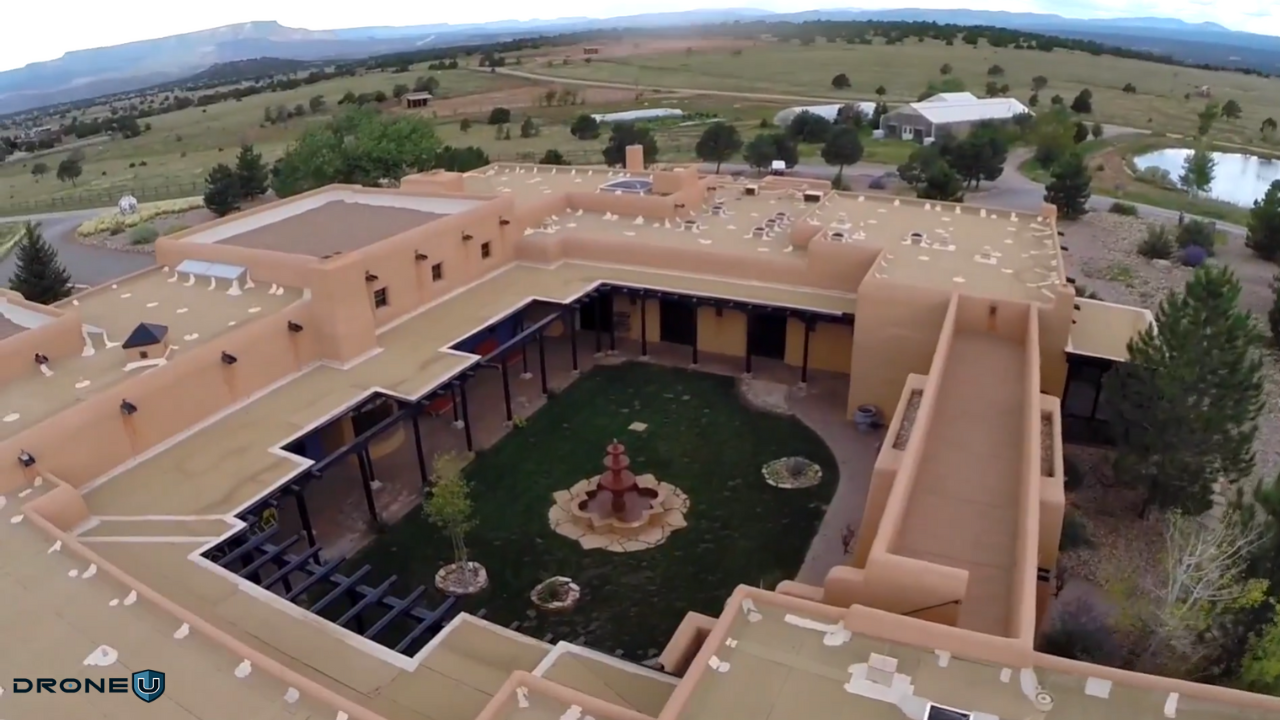
There is a wide range of missions that UAV pilots typically fly, such as:
- Property listings
- Complexes and shopping centers
- Various resort facilities
- Golf courses
Real estate drone operators enjoy incredible versatility, and drone pilots have a wide array of opportunities to work on different projects. In addition to providing flexibility, these positions provide the invaluable experience required for success.
2. Drone Jobs in Construction
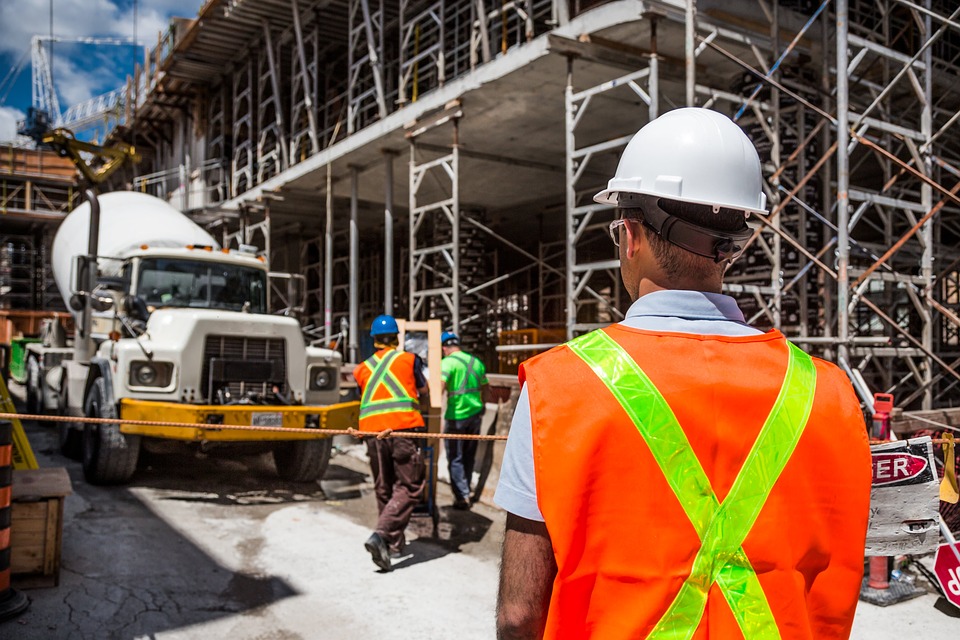
Construction is one of the fastest-growing commercial drone industries, with the use of drones increasing exponentially over the last few years.
And it’s not without reason.
According to Fact.MR, the drone market is anticipated to exhibit a compound annual growth rate (CAGR) of 23.4%, reaching a market value of US$ 9376 million by the end of 2033.
A typical commercial construction project runs 20 months behind schedule and it inflates by nearly 80%.
UAV (unmanned aerial vehicle) operators are saving construction companies significant money by using drones to conduct crucial surveys throughout the entire project lifecycle. These surveys cover a wide range, including:
- Precise measurement and location of stockpiles: Drones capture accurate data on material volumes and locations, reducing the need for manual surveys and potential errors.
- Real-time progress monitoring in remote areas: From mountains to deserts, drones offer a safe and efficient way to track construction progress in hard-to-reach areas.
- Enhanced safety assessments: Drones can inspect dangerous or difficult-to-access areas, identifying potential hazards and keeping workers safe.
This boom in the construction industry has opened up some really interesting opportunities to join UAV operators such as
1. Site Selection: You can fly to a prospective site for the most updated view of the property and help with site selection and planning.
2. Zoning Meetings: Zoning meetings can be a tough task and it can cause unwanted delays. You can use drone data and send it to the zoning board thereby speeding up the process.
3. Legal Protection and Documentation: You can document the conditions of the roads by creating a map or doing a video. That way the construction team is aware of the site before the trucks and heavy equipment show up.
4. Construction Monitoring and Management: Construction contractors can get the most updated high-resolution maps of their job sites for better site monitoring and overall site management.
5. Construction Progression:
You can import the most up-to-date site plan to the drone map and compare the designs to reality – in both 2D and 3D. This can help construction companies accurately track the actual construction progress. It’s also a great way to keep interested parties, such as investors, apprised of the progress.
A construction firm may survey a huge region with a drone, process the data using specialized software, and determine where all of its materials are or where work may be falling behind.
Additionally, drones play a vital role in project planning, providing aerial data that helps construction companies determine suitable construction zones and potential limitations.
Merits and Demerits of Choosing the Construction Industry
Here’s a breakdown of the merits and demerits for drone pilots operating within the construction industry:
| Merits | Demerits |
| 1. Enhanced project monitoring and progress tracking using aerial surveys and inspections. | 1. Complex airspace regulations and restrictions near construction sites. |
| 2. Improved safety through remote site monitoring, reducing the need for on-site visits. | 2. Initial investment and maintenance costs for high-quality drone equipment. |
| 3. Efficient data collection for site mapping, topography analysis, and 3D modeling. | 3. Limited battery life and flight time can impact productivity and data collection. |
| 4. Quick identification of potential issues such as structural defects or safety hazards. | 4. Dependence on favorable weather conditions for safe and effective drone operations. |
Types of Drone Work in the Construction Industry
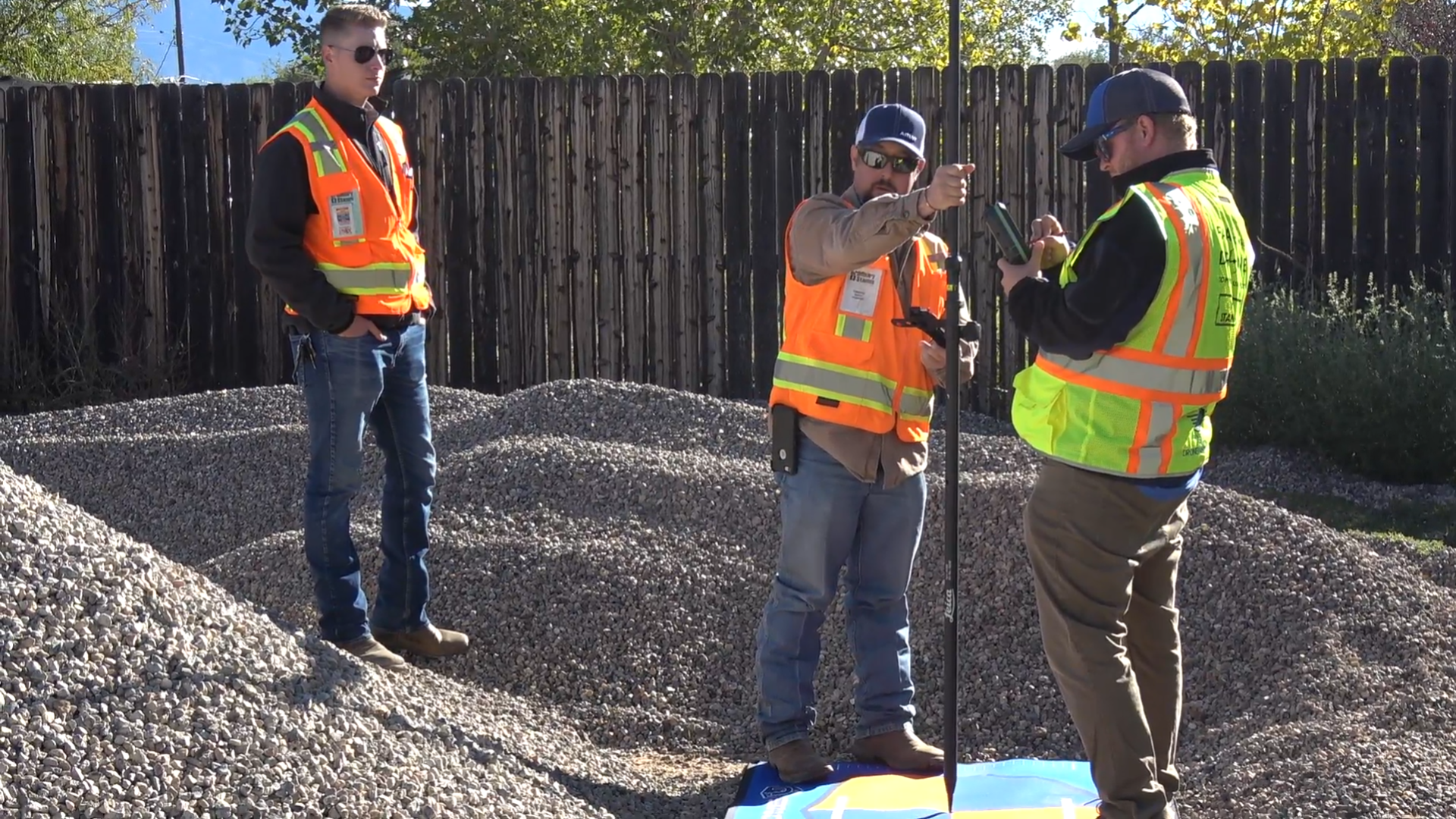
UAV pilots working in construction typically fly a variety of different missions, including pre-building site inspections of the earth, possible drainage spots, and other factors to determine the best places to build, dig, or stockpile materials.
These types of missions require UAV operators to have a solid understanding of industry regulations and best practices when it comes to aerial data collection.
Whether you’re working for a large company or a small startup, there is plenty of demand for UAV pilot jobs in this industry.
3. Drone Jobs in Mining and Aggregate
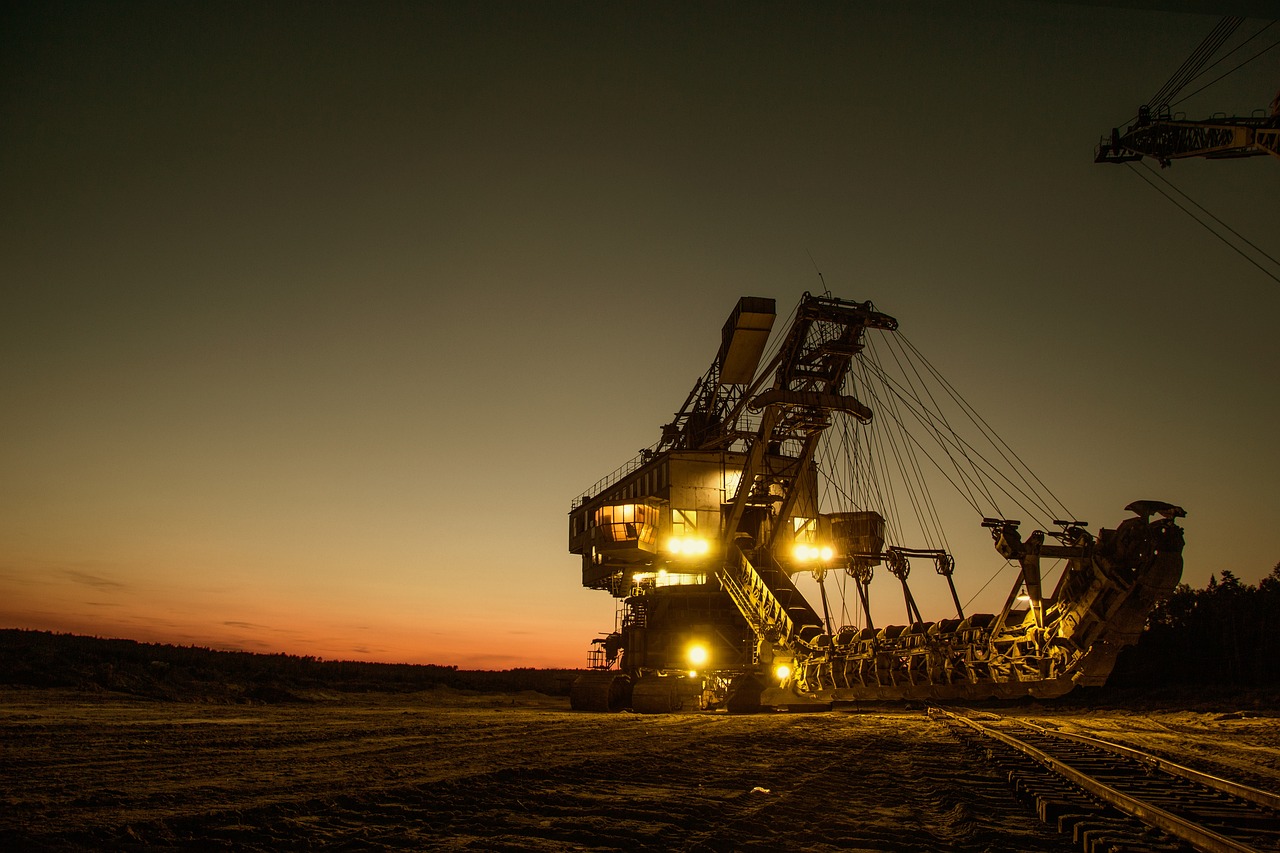
Mining and aggregate companies are swiftly recognizing the potential of drones and incorporating them into their operations in a variety of ways.
In the mining industry, drones play an important role in performing tasks such as mapping, surveying, and safety inspections.
While the aggregates industry uses drones for tasks such as stockpile management, progress monitoring, and quality control.
A mining or aggregate firm can see which locations are better or worse for digging and stockpiling materials using a 3D map generated from aerial data.
A drone can collect the same amount of data in less than 20 minutes which would take a person on foot hours to accomplish. Also, drones eliminate the need for personnel to enter potentially hazardous locations to gather data.
Merits and Demerits of Choosing the Mining Industry
The mining and aggregates industry offers unique opportunities and challenges for drone pilots. Below are the merits and demerits of working within this sector.
| Merits | Demerits |
| 1. You can map and measure large areas much faster and cheaper than before. | 1. Flying drones in mines needs special permission. |
| 2. Drones can go into dangerous places instead of people, making it much safer for workers. | 2. The tough environment in mines and quarries means you need to spend money on drones that can take high-quality images and not get damaged easily. |
| 3. The information from drones helps mine managers plan better, track materials, and make smarter decisions. | 3. Just flying the drone isn’t enough. You need to be good at turning all the photos and measurements into useful information. |
| 4. Drones can check how mining affects the land and help companies follow environmental rules. | 4. Mines can be dusty, noisy, and full of stuff that messes with drones. This can make flying tricky and affect the quality of the information you get. |
| 5. Using drones for checks and measuring stuff can be cheaper than traditional methods. | 5. High-quality drones are required. |
Types of Drone Work in the Mining and Aggregate Industry
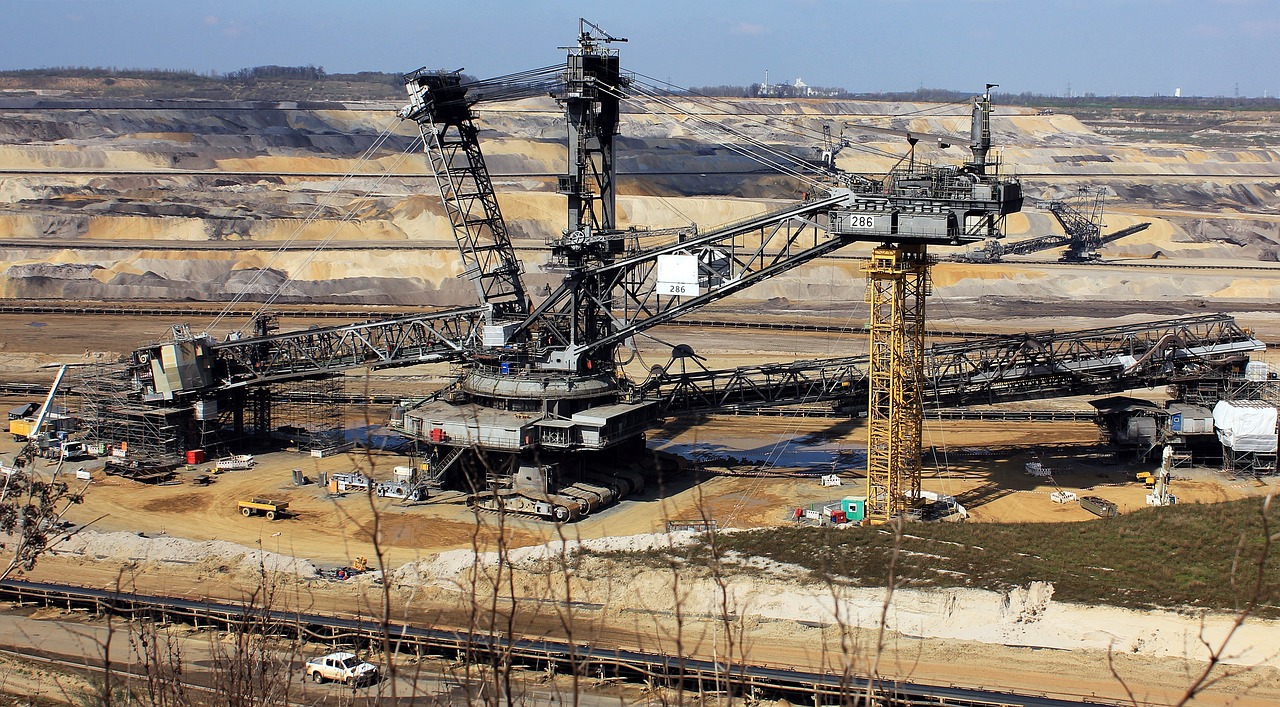
UAS operators working in mining or aggregate typically fly a variety of different missions, including site surveys, progress monitoring, and safety inspections.
In the measurement of stockpiles of earth, sand, clay, or other aggregate materials, monitoring progress plays a crucial role.
By using photos, videos, and maps, stakeholders can visually track and assess the amount of work completed at a specific site.
With the right training and experience, you can become a valuable asset on any mining or aggregates team.
4. Drone Jobs in Filmmaking
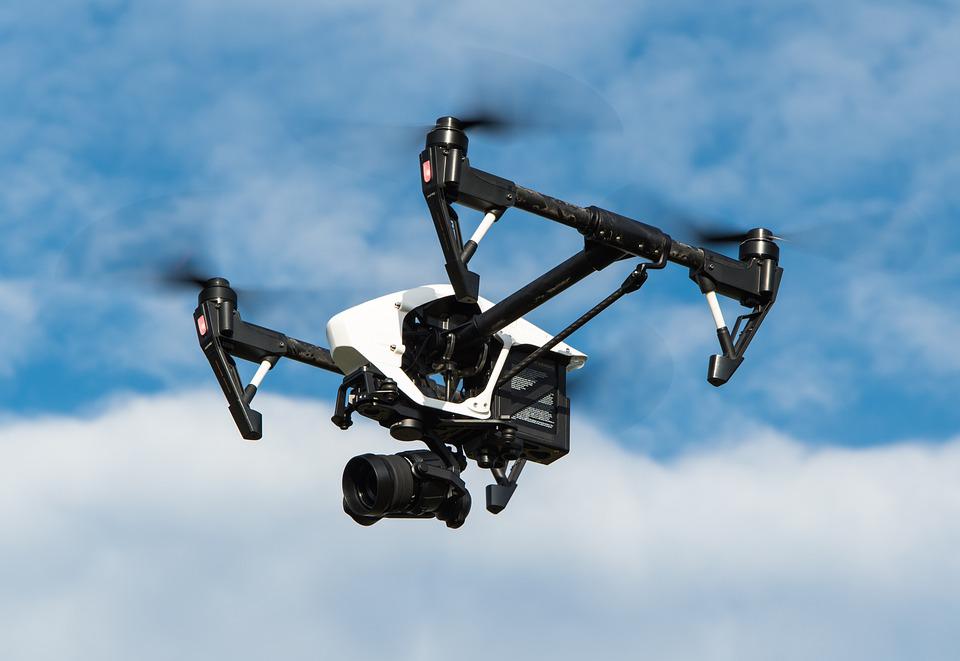
Drones have become the buzziest item in the film industry, adding a breath of fresh air to any scene with their unique aerial perspective.
But their appeal goes beyond just cool shots.
Not only are drones considerably more cost-effective than helicopters, but they also offer enhanced versatility. Unlike helicopters, drones do not entail the same operational or insurance expenses.
Furthermore, opting for drones over helicopters eliminates the risk of potential harm to pilots. As a result, the demand for skilled drone operators in the film industry continues to rise steadily, providing more work for UAV operators in the film industry.
According to drone operators working in the film industry, most of their work comes from specific projects. In these projects, film productions hire drone pilots to capture aerial shots of chase sequences or locations. However, they typically do not remain on staff for the entire duration of a shoot.
The film industry actively employs drones for a range of purposes, such as establishing shots, following action, capturing aerial footage, and performing tasks that are difficult or unsafe to perform by conventional methods.
Merits and Demerits of Choosing the Filmmaking Industry
Drone pilots need to understand these merits and demerits before considering getting into this exciting industry
| Merits | Demerits |
| 1. Capture breathtaking aerial shots and dynamic perspectives, enhancing visual storytelling. | 1. Strict aviation regulations and permits are required for filming with drones, adding logistical challenges. |
| 2. Cost-effective alternative to traditional helicopter shots, reducing production expenses. | 2. Limited flight time and battery constraints may necessitate multiple takes and careful planning. |
| 3. Increased flexibility and creativity in shot composition, enabling unique and cinematic visuals. | 3. Skill and experience required to operate drones effectively and capture professional-quality footage. |
| 4. Streamlined production process with quick setup and versatility in various filming environments. | 4. Potential disruptions due to noise from drone propellers, requiring careful coordination on set. |
Types of Drone Work in Film Production
Check out this in-depth video on how you can get work from a big production house like Netflix
UAV pilots can fly on a variety of missions in the film industry. Mission types include aerial images and videography, cinematic shots.
- Aerial photography typically involves taking pictures or videos of a specific location from a drone.
- Cinematic shots involve capturing more complex, artistic footage using a drone.
- Aerial footage for chase scenes, fight scenes, and other action sequences.
As a professional involved in drone operator jobs within the film industry, it is important to be familiar with these areas of drone and becoming adept at flying your drone in various scenarios.
5. Drone Jobs in Public Safety
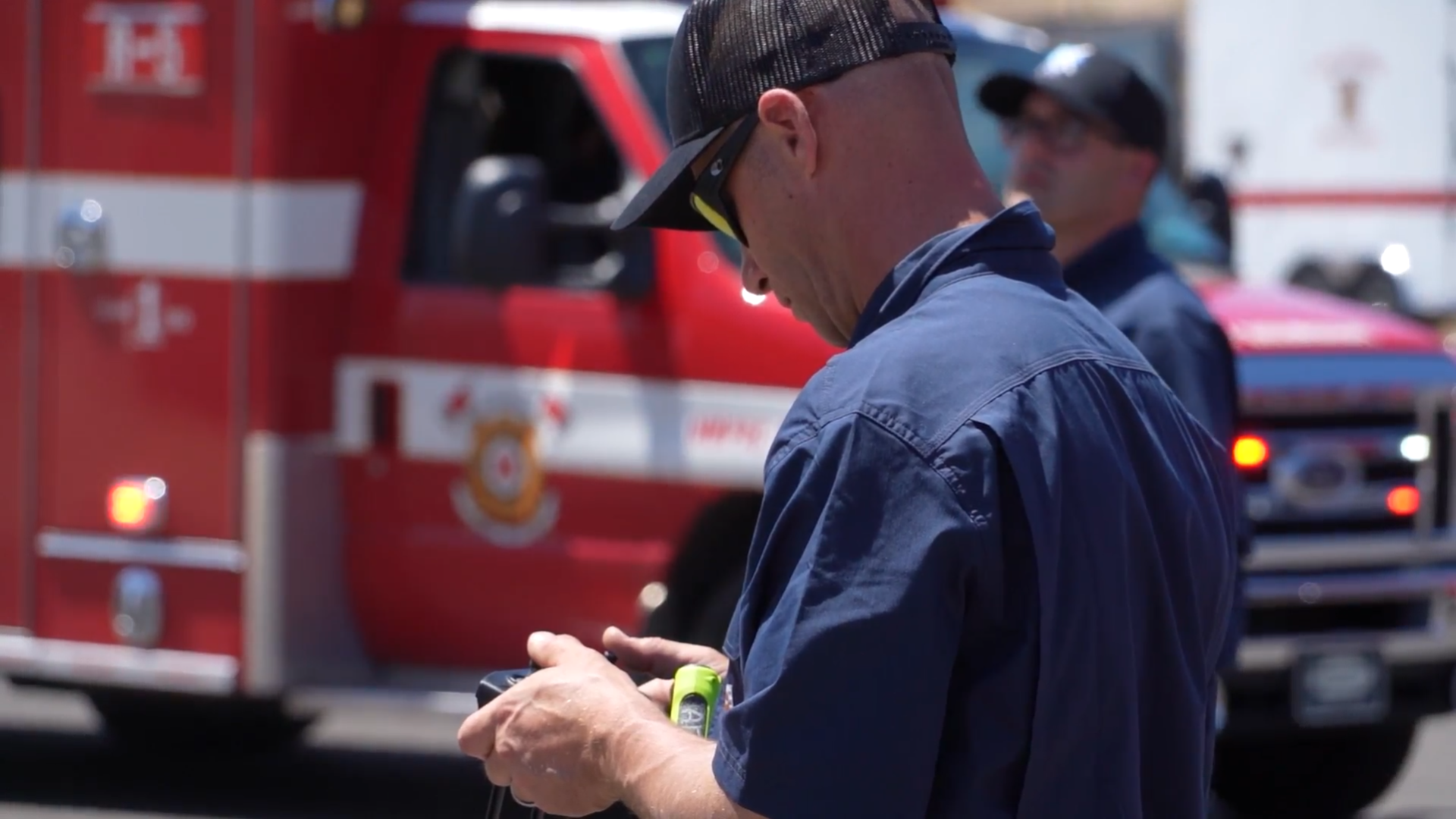
Public safety officials use drones for a variety of purposes such as search and rescue operations, firefighting, disaster relief logistics, and much more.
According to a study from Bard’s Center for the Study of the Drone, over 1500 public safety organizations are using drones as of March 2020. This figure nearly doubles the count recorded in mid-2018, indicating a continuous upward trend.
From search and rescue missions to disaster relief and wildlife conservation, drones are changing the game for public safety professionals. These exciting opportunities can be part-time or full-time, offering both financial rewards and emotional satisfaction.
Here’s how drones are making a difference:
A. On The Frontline:
1. Search and rescue: These drone heroes scan vast areas, locating lost hikers, victims trapped in floods, or anyone needing help.
2. Disaster response: After hurricanes or floods, drones deliver vital supplies, assess damage, and help first responders make informed decisions.
3. Wildlife conservation: Drones monitor endangered species, track poachers, and protect delicate ecosystems.
B. Supporting Local Heroes:
1. Law enforcement: 3D maps created by drones improve response times and aid in evacuations during crises.
2. Fire departments: Drones guide firefighters with real-time views, helping them find victims and navigate danger zones. Orthomosaic maps of buildings created by drones help them plan safer rescues.
However, the ability to use drones in public safety may vary considerably based on the purpose.
While firefighters use drones to enhance their situational awareness during fires. They also use drones to create orthomosaic maps of local schools and other buildings/facilities. This helps firefighters identify all the exit points, ensuring they have a clear view of the safest escape routes in case of a fire.
To get started in this field, you may need to complete specialized training or certification programs. It’s important to acquire the essential skills and knowledge needed for working with drones in public safety. Having a background in a related industry can be beneficial too.
To be a successful drone pilot in public safety, you need strong communication skills and need to be familiar with the latest technologies and drone regulations. You also need to equip yourself with safety procedures for flying drones in high-risk situations.
Merits and Demerits of Choosing Public Safety Industry
Drones in public safety can be super helpful for getting to emergencies quickly, keeping rescue teams safe, and saving money.
|
Merits |
Demerits |
| 1. Efficient disaster assessment through aerial surveys, helping prioritize response efforts. | 1. Dependence on weather conditions, especially in challenging situations such as storms or low visibility. |
| 2. Enhanced situational awareness during law enforcement operations, improving public safety. | 2. Initial training and certification may be time-consuming, impacting immediate deployment. |
| 3. Quick deployment for monitoring large crowds, traffic management, and event security. | 3. Privacy concerns and public perception issues regarding the use of drones in surveillance. |
Types of Drone Work in Public Safety
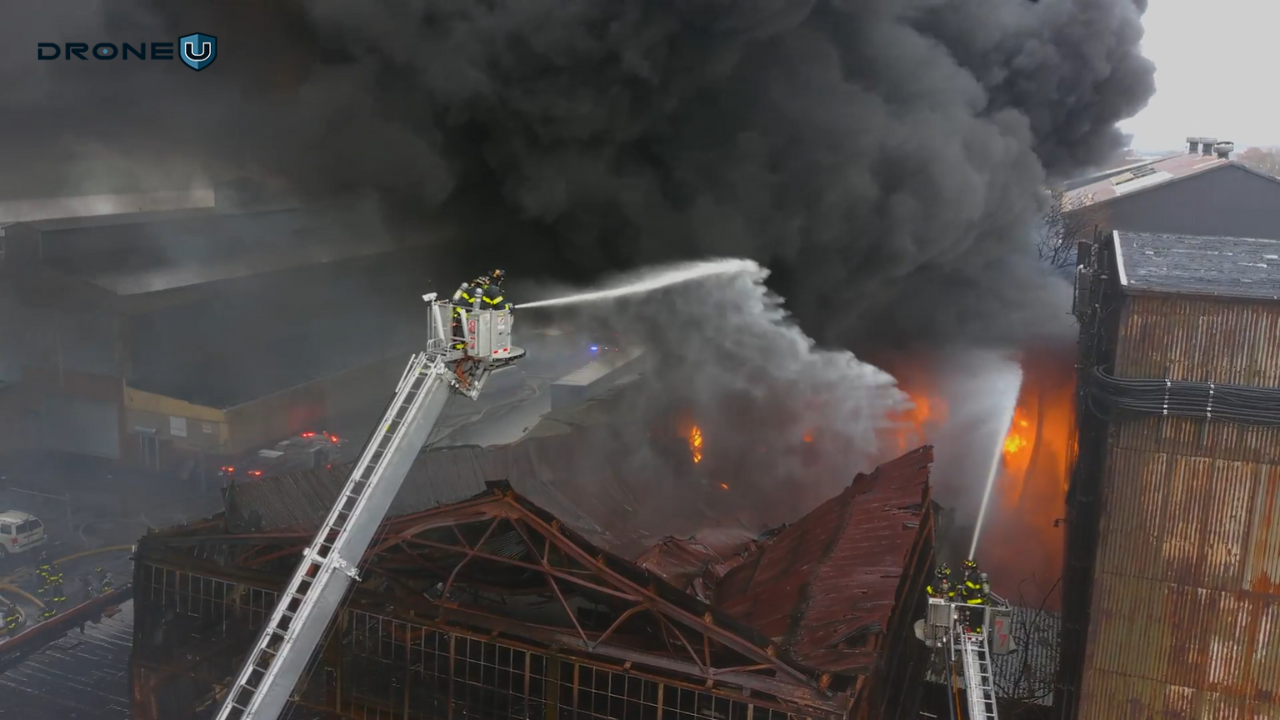
There are a variety of different types of missions that UAV operators in public safety typically fly such as:
- Mapping of the crime scene
- Search and rescue operations
- Accident investigation and traffic management
- The aftermath of a disaster
- Emergency services
Drones in the public safety industry are generally used in various missions, including
1. Search and Rescue Operations:
One of the most common types of missions flown by public safety UAV pilots is search and rescue operations. In these situations, drones can quickly and efficiently locate missing persons in difficult-to-reach areas.
Drones equipped with thermal imaging cameras allow UAV pilots to locate missing persons even in dark, foggy, or otherwise challenging conditions.
2. Disaster Relief Logistics:
Another common mission type for public safety UAS operators is disaster relief logistics. In these situations, drones can be an asset in transporting supplies and equipment to areas affected by a natural disaster.
This can be particularly valuable in situations where roads and other infrastructure have been damaged or destroyed, making traditional methods of transportation inaccessible.
3. Wildlife Conservation:
In addition to search and rescue operations and disaster relief logistics, another common type of mission flown by public safety UAS operators is wildlife conservation. Drones can make detailed maps of natural habitats, track animal populations, identify illegal poaching activities, and more.
6. Drone Pilot Jobs in Insurance
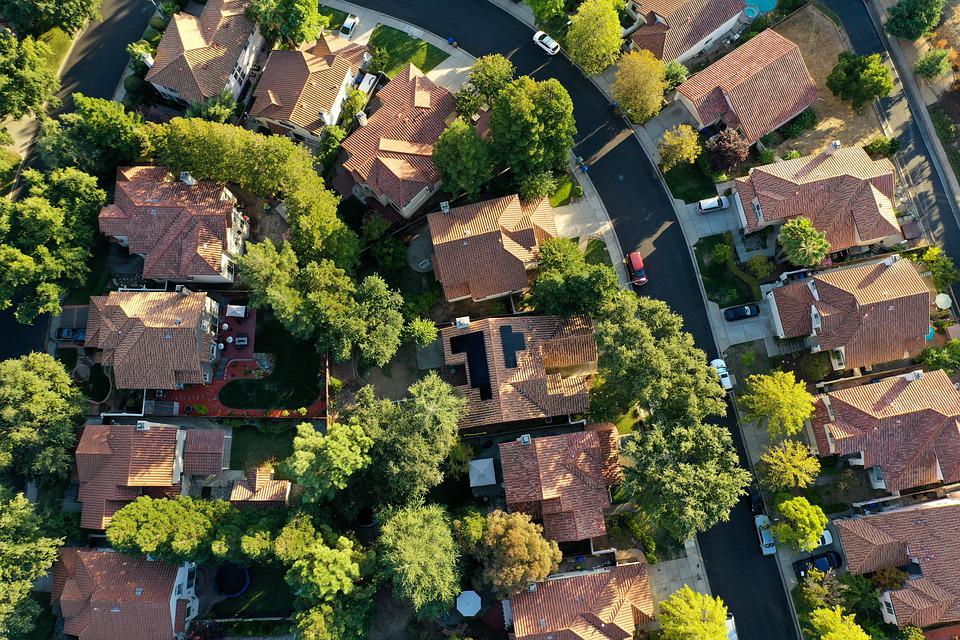
Generally insurance companies use drones to create 3D maps of properties. This helps them to assess risk and calculate premiums more accurately.
Typically, Insurance companies often receive multiple claims for roof damage after severe weather occurs in a particular area. In the past, they would send an insurance inspector or adjuster to physically visit each location, climb a ladder, and take photographs of the roofs.
However, with the use of drones, a skilled drone pilot can take pictures of a damaged roof in 20-30 minutes by flying a pre-planned pattern over it and get all the footage needed to evaluate an insurance claim.
This type of work is simple and in high demand, as it is a quick, cost-effective alternative to manual inspections.
Merits and Demerits of Choosing the Insurance Industry
Let’s break down the pros and cons of using drones in the insurance industry in a super simple way.
| Merits | Demerits |
| 1. Ability to capture hard-to-reach areas such as rooftops or remote locations, improving accuracy in assessing damages. | 1. Challenges in integrating drone data with existing insurance systems and processes, leading to potential workflow disruptions. |
| 2. Facilitates the documentation of pre-existing conditions and property features for comprehensive insurance records. | 2. Concerns over data security and privacy breaches related to the storage and transmission of aerial imagery. |
| 3. Enhances customer satisfaction through faster claim processing and transparent damage assessments. | 3. Liability risks associated with drone accidents or errors in data interpretation, leading to potential legal disputes. |
| 4. Provides actionable insights for risk mitigation and policy adjustments based on detailed aerial observations. | 4. Limited availability of skilled drone pilots with specialized knowledge of insurance industry requirements, leading to resource constraints. |
Applications of Drones in Insurance Work
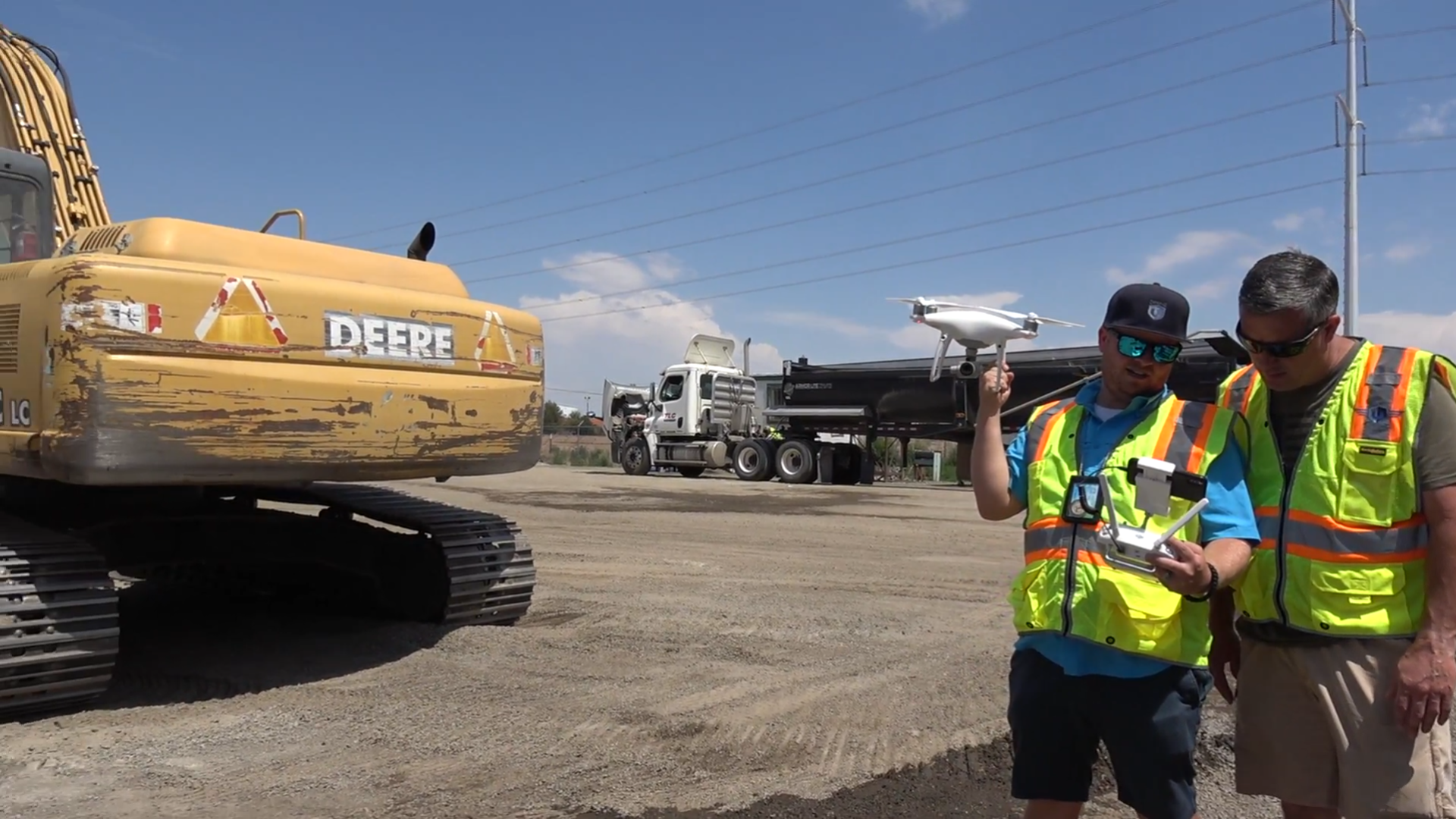
Some of the most common types of missions include damage assessment, property inspection to document risk and/or an asset, mapping, and even surveying.
- Damage assessment missions involve flying drones over an area that has been damaged by a natural disaster or accident, such as a forest fire, hurricane, or severe storm.
- Property inspection missions involve flying drones over buildings, homes, and other types of property to assess the damage and create detailed reports for insurance companies.
- Mapping missions involve using specialized drone imaging software to create high-quality maps and 3D models that insurance companies can use to assess the risk and value of properties.
- Surveying missions involve flying drones over large areas to collect data that can be used for land surveying and planning activities.
Overall, UAV pilots play an important role in the insurance industry by helping companies assess damages, inspect properties, and gather valuable data on a range of different areas.
Many insurance companies offer drone pilot internships or apprenticeship opportunities that can help you build your skills and gain real-world experience.
Interested in augmenting drones in the insurance industry?
Check our Residential Roof Inspection Course
7. Drone Operator Jobs in Journalism
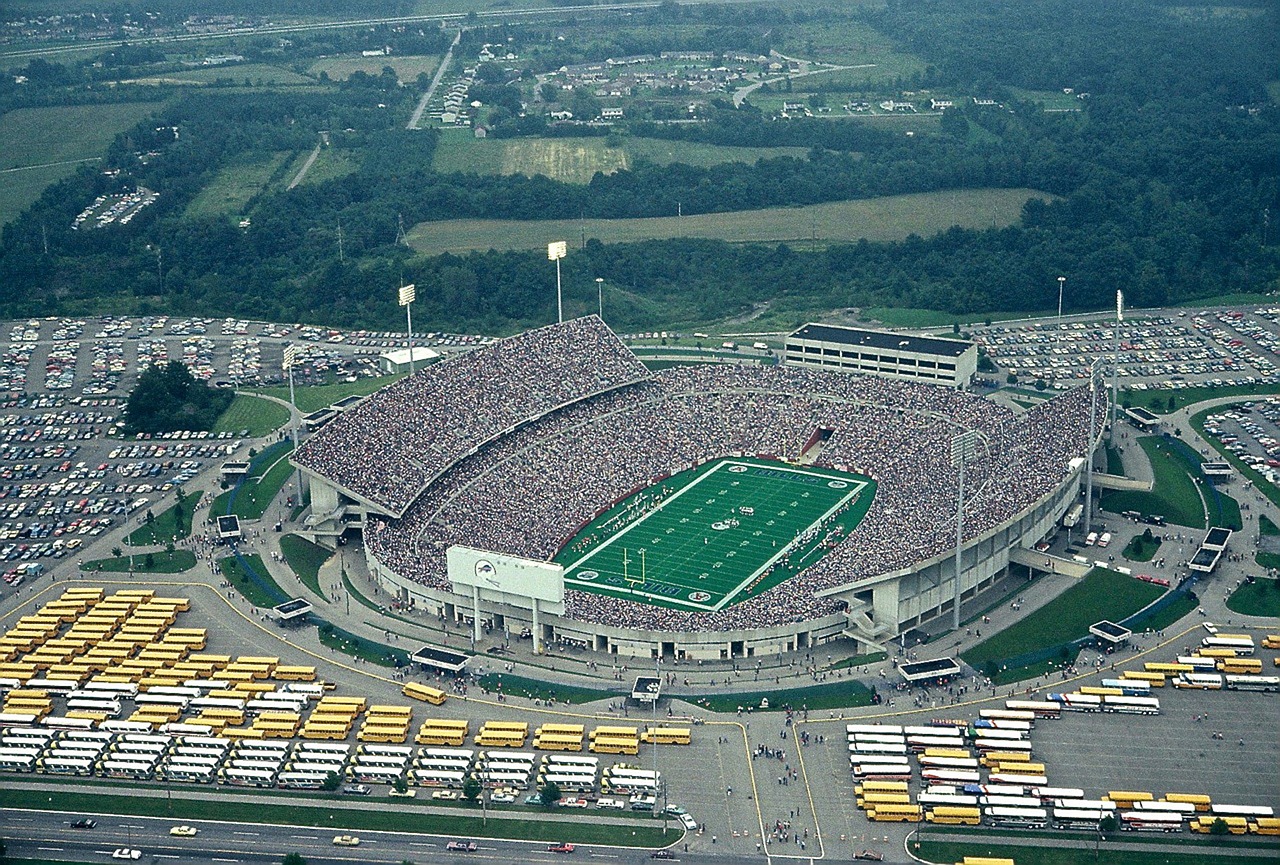
Drones are transforming the landscape of news consumption and understanding. The war in Ukraine serves as a clear example of how drones have become a frequent tool in the field of journalism.
Using drones to capture aerial stills and video footage increases the drama and detail of news coverage.
What makes drones truly special is their ability to capture scenes that were previously out of reach. They offer a unique viewpoint that traditional methods of photography and videography cannot match.
Drones are providing a new way to capture newsworthy events and stories. With aerial shots captured by drones, we can see the damage caused by floods, the size of crowds, and the extent of wildfires in new ways.
It’s important to remember that there are many different uses for drones in journalism, and the level of quality needed can vary. Having the most advanced camera may not be essential for breaking news or disaster coverage; having the footage is what matters most.
However, if you’re attempting to capture an artistic still for a longer video-based narrative that you’ll be assisting to cover, you may want a more expensive drone with a customizable payload. That way you can attach your high-end camera and get the greatest shots feasible.
Merits and Demerits of Choosing Journalism Industry
Drones give journalists some amazing ways to tell stories with unique and eye-catching footage. But, they also have to deal with some difficulties. Let’s know the advantages and disadvantages.
|
Merits |
Demerits |
| 1. Provides access to otherwise inaccessible or hazardous areas for investigative reporting. | 1. Potential for interference or obstruction of emergency response efforts when drones are used in news coverage of accidents or disasters. |
| 2. Enables coverage of environmental issues and conservation efforts from aerial perspectives, fostering awareness. | 2. Challenges in maintaining objectivity and credibility in journalistic storytelling when relying heavily on aerial footage. |
| 3. Facilitates real-time reporting and live streaming of events, enhancing audience engagement and immediacy. | 3. Limited battery life and flight range of drones may restrict coverage duration and scope, particularly for extended events or remote locations. |
| 4. Supports immersive storytelling through interactive multimedia platforms, offering audiences engaging experiences. | 4. Concerns over airspace congestion and potential conflicts with other drone operators or manned aircraft during news coverage assignments. |
Applications of Drones in Journalism Work

Some of the most common types of missions that drone operator jobs in the journalism industry can undertake include
- Surveillance responsibilities
- Traffic reports
- Mapping support
- Filming disasters—fires, floods, storms, hurricanes, twisters, and other calamities.
- Live reporting of shooting incidents, hostage situations, collapsed buildings, and other live events. These scenarios can be quite sensitive and require the pilot to use caution and potentially discretion when filming in these environments.
- Photojournalism – capturing high-quality stills and videos to tell a visual story.
8. Drone Jobs in Agriculture
According to the Association for Unmanned Vehicle Systems International (AUVSI), the agricultural industry is expected to be the largest market for drone applications in the coming years.
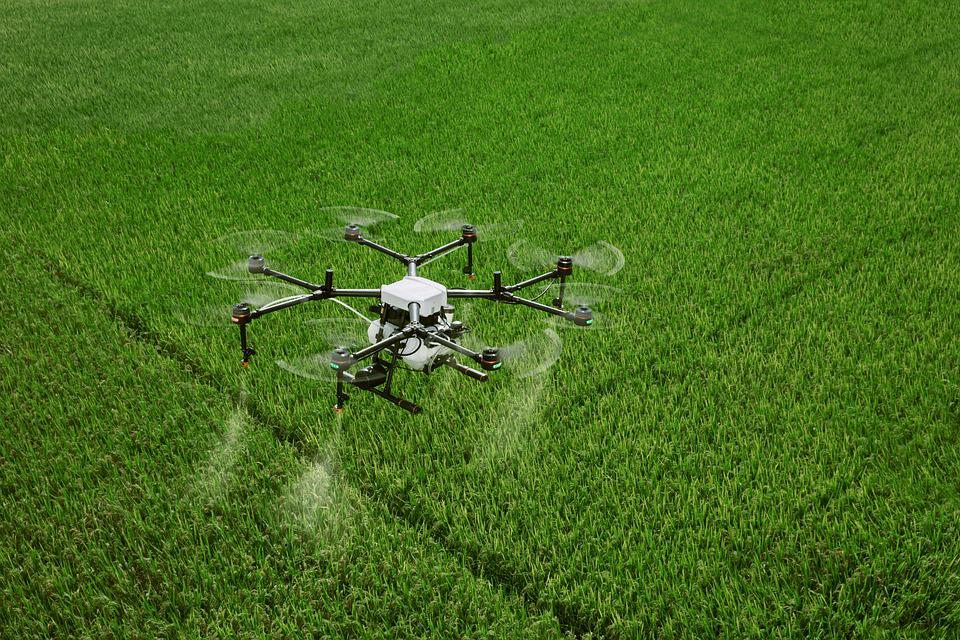
The agricultural industry is one of the most promising markets for UAS operators, and there are plenty of opportunities available for those with the right skills and training.
As a drone pilot in the agricultural industry, you have to be familiar with the multiple software tools and resources used for data analysis and management.
In the agriculture industry, you can work as a drone operator for a farm or ranch, or you can provide consulting services to agricultural businesses.
You can also start your own drone-based business, offering crop mapping, scouting, or monitoring services.
A Normalized Difference Vegetation Index map, often known as an NDVI map, is one of the most common outputs given by a drone pilot to a farmer. These maps can be used to identify what plant is growing where on a piece of property and also how well each one is doing.
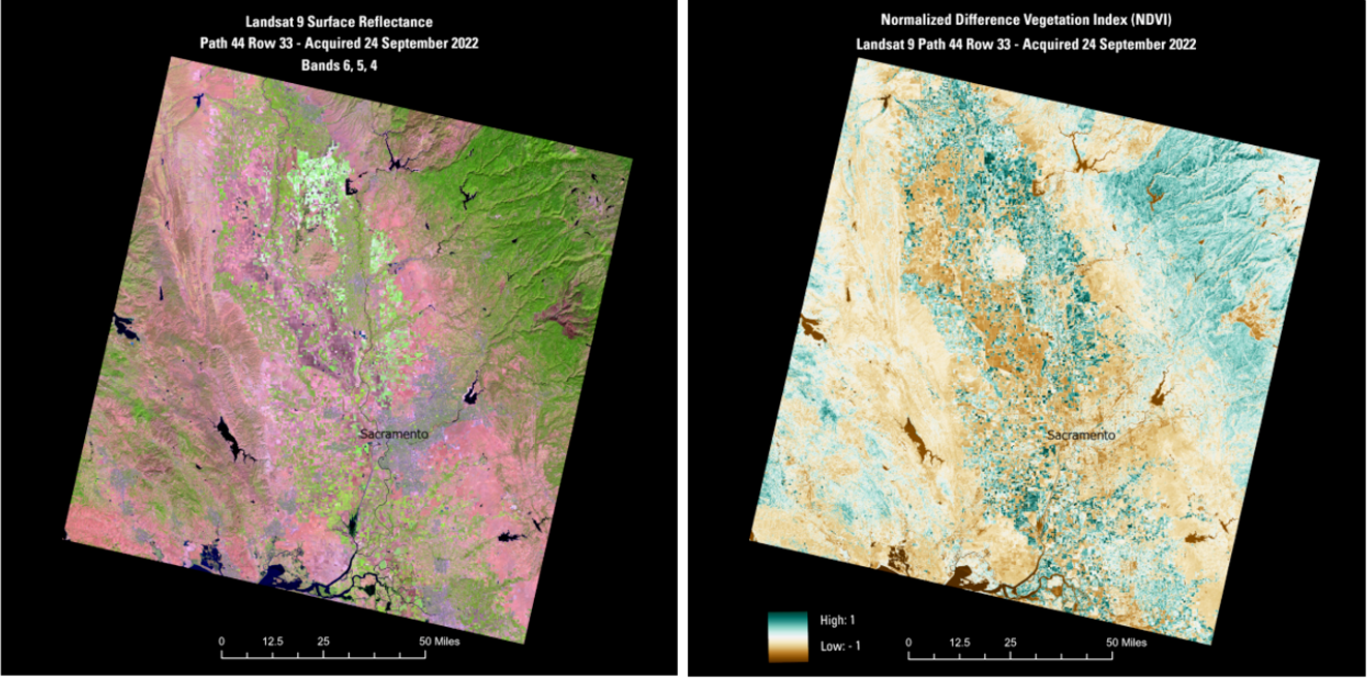 Source: USGS
Source: USGS
On top of flying skills, you need great decision-making abilities when it comes to identifying potential crop issues or hazards.
Merits and Demerits of Choosing the Agriculture Industry
Let’s break down the advantages and disadvantages of being a drone operator in the agriculture industry.
|
Merits |
Demerits |
| 1. Precision agriculture through aerial imagery enables efficient crop monitoring and management. | 1. Initial investment in drone technology and training may be costly for small-scale farmers. |
| 2. Early detection of crop diseases, pest infestations, and nutrient deficiencies, allowing timely interventions. | 2. Limited flight time and battery capacity may require multiple flights for large farm operations. |
| 3. Optimized resource utilization through data-driven decision-making, leading to increased yield and cost savings. | 3. Complex data analysis and interpretation may require specialized knowledge and technical expertise. |
| 4. Improved mapping and analysis of field variability, facilitating targeted treatment and precision spraying. | 4. Integration challenges with existing farm management systems and workflows may disrupt adoption. |
Types of Work in Agriculture That Involves Drone Technology
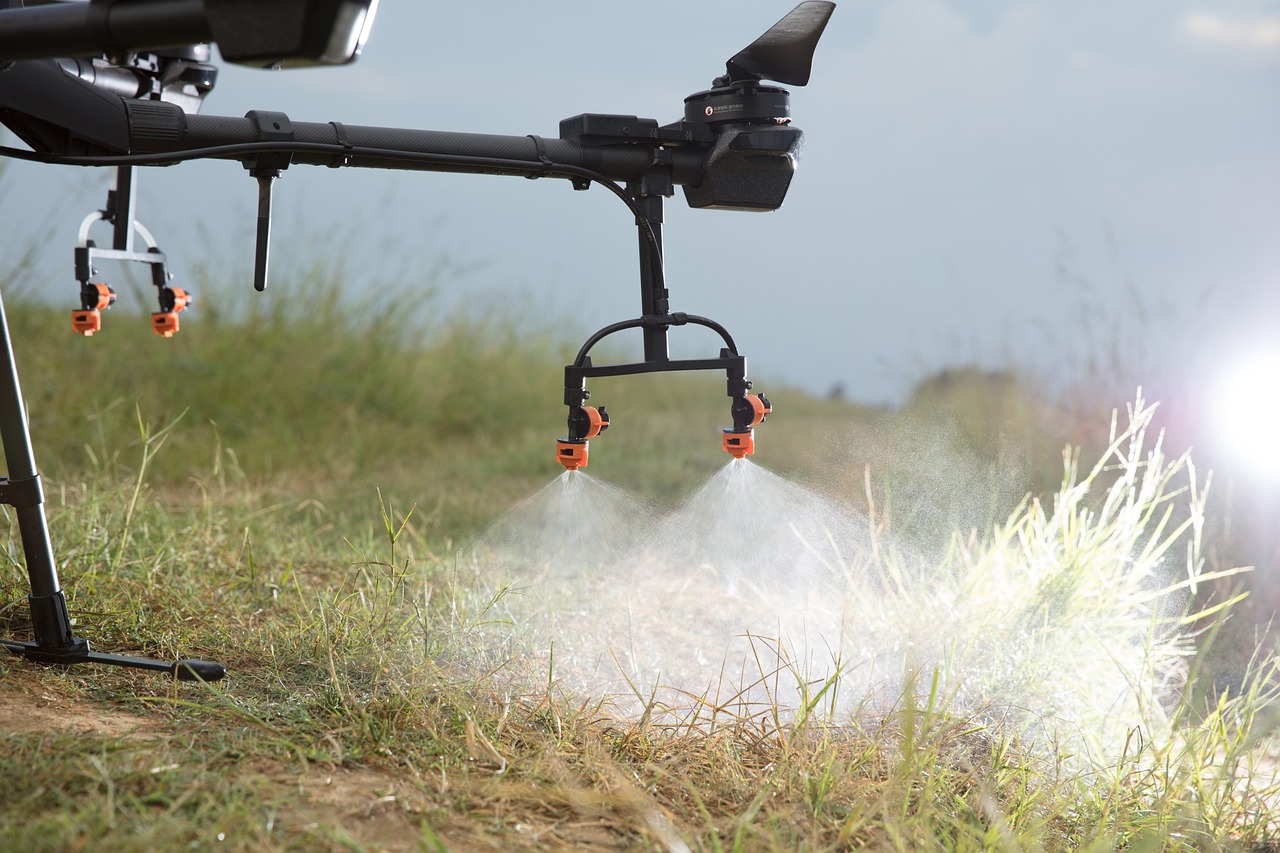
UAV operators typically fly a number of different missions in the agriculture industry, including crop scouting, crop mapping, and livestock monitoring.
- Crop scouting involves flying over fields to identify potential issues or hazards such as pest or disease infestations, nutrient deficiencies, plant stress, or other concerns.
- Crop mapping involves using drone imagery to create detailed maps of crop health and performance, which can help optimize land management and improve yields.
- Livestock monitoring involves using drones to keep track of livestock activity and behavior, such as grazing patterns or heat stress in animals.
- Irrigation Monitoring: Drones with thermal cameras installed can assist in identifying irrigation concerns or areas that are getting too little or excessive water.
- Soil and Field Analysis: It is feasible to detect soil quality, nutrient management, and soil dead zones using 3D maps of existing soils.
This data can be used to calculate the most effective planting patterns, water usage, and nutrient management.
9. Drone Pilot Jobs in Transportation
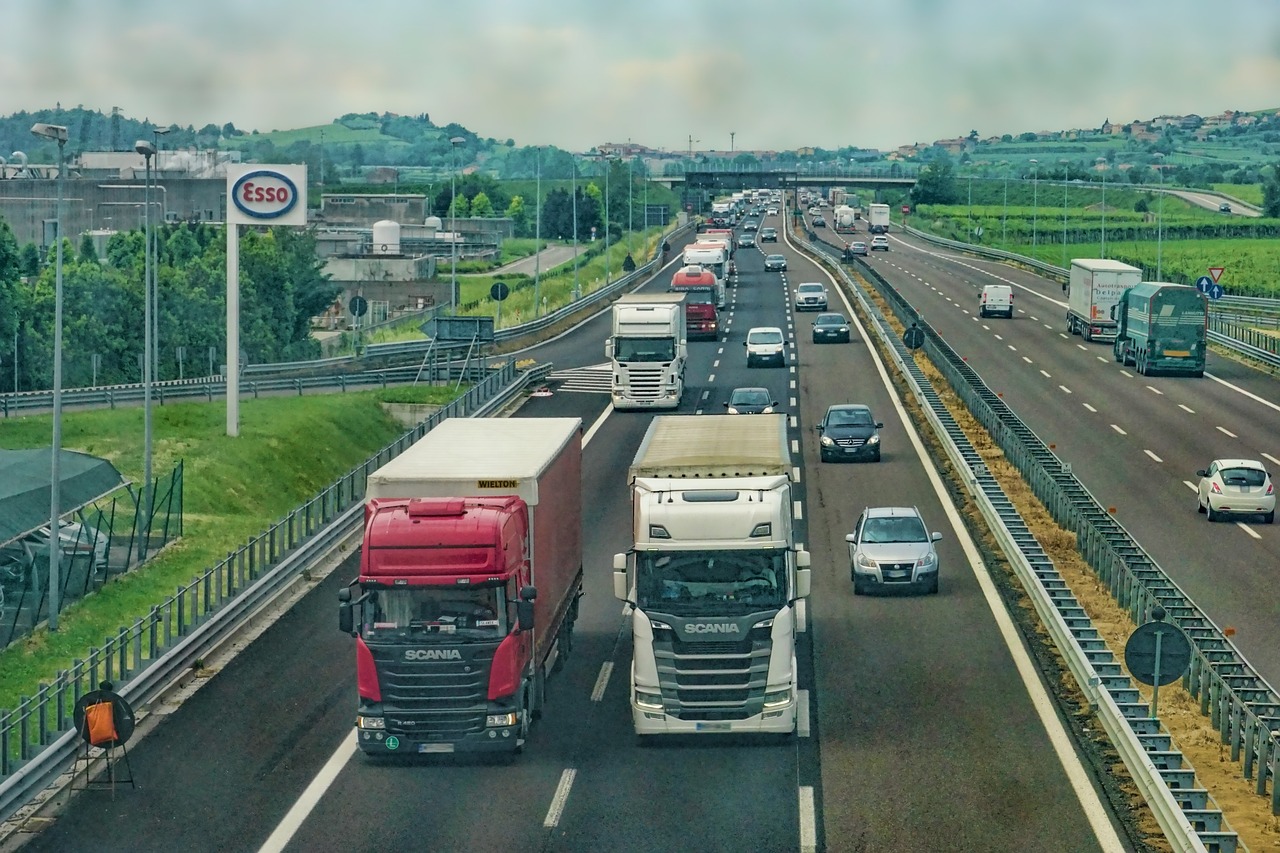
In a 2019 study by AASHTO (American Association of State Highway and Transportation Officials), they found that in 36 out of 50 states (72%), Departments of Transportation funded centers or programs for drone pilot jobs.
The use of drones in transportation is an area of growing interest. UAVs have the potential to revolutionize the way we move people and goods around, making transportation more efficient and less expensive.
Traditionally, an inspector would have to walk the track and note any abnormalities one by one.
These inspections can now be done much more quickly and provide information securely using drones.
BNSF Railway was one of the first private partners of the FAA’s Pathfinder Program, performing research on Beyond Visual Line of Sight (BVLOS) flights for railway inspections.
You can use drones in transportation to revolutionize package delivery, provide seamless taxi services, and even introduce cutting-edge solutions for public transport.
To be successful as a drone pilot in the transportation sector, you will require solid technical skills and knowledge of aviation regulations.
Merits and Demerits of Choosing the Transportation Industry
Let’s understand the pros and cons of being a drone operator in the transportation industry.
|
Merits |
Demerits |
| 1. Rapid assessment of hard-to-reach or dangerous areas during transportation infrastructure emergencies. | 1. Challenges in integrating drone data with existing transportation management systems, leading to potential coordination issues. |
| 2. Aerial monitoring of wildlife crossings and potential hazards on roadways, enhancing safety measures. | 2. Concerns over public perception and potential backlash related to privacy issues during aerial monitoring in urban areas. |
| 3. Facilitates efficient inspection of tunnels, bridges, and remote transportation infrastructure, improving maintenance. | 3. Limited acceptance and understanding of drone technology within traditional transportation management practices. |
| 4. Quick deployment for traffic flow analysis during major events or construction, optimizing transportation routes. | 4. Liability concerns and insurance complexities related to accidents or damages involving drones in transportation operations. |
Types of UAS Work in the Transportation Industry

There are a number of different types of work that UAV operators can perform within the transportation industry, including:
Inspecting railway ties and tracks to detect difficulties before they become worse is an important task.
Monorails—Inspecting and assessing concrete support beams, rails, and other essential components.
Mitigating the dangers of rock falls, landslides, and floods by leveraging drone data.
Whether you’re providing package delivery services for businesses or transporting passengers in public transit applications, there are many exciting opportunities to explore in the field of drone-powered transportation.
10. Drone Pilot Jobs in Energy
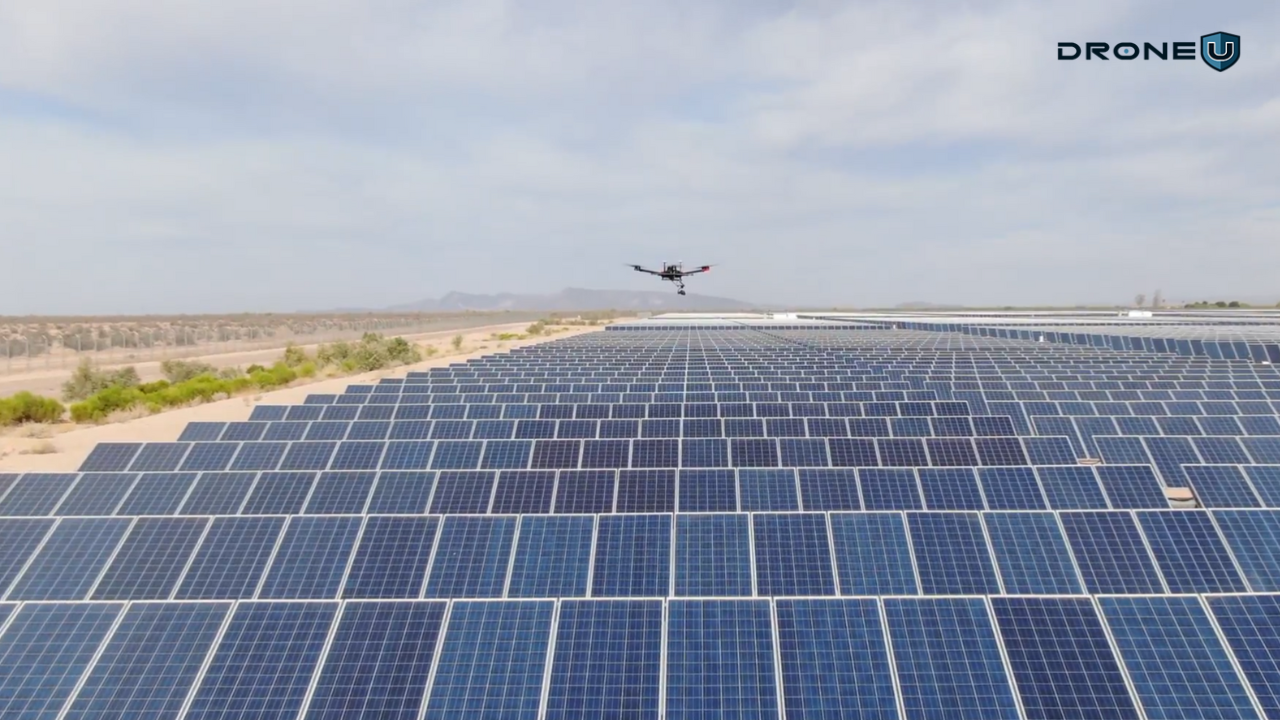
Drones are a game-changing technology in the field of power line and solar panel inspections for energy firms.
For energy professionals looking to incorporate drones into their work, numerous opportunities exist.
Companies in the energy industry hire UAS operators to conduct various tasks, including aerial photography and videography, surveying and mapping, pipeline monitoring, logistics for oil spill cleanup, and more.
One point worth noticing is that the Federal Aviation Administration is allowing, through their waiver system, energy firms to conduct BVLOS flights, which are normally prohibited by Part 107 regulations, to inspect larger areas in less time.
BVLOS, which stands for Beyond Visual Line of Sight, refers to the operation of unmanned aerial vehicles (UAVs) and drones beyond the typical range where the pilot can visually observe them.
In April of 2018, the FAA issued the first BVLOS waiver to an energy company, Xcel Energy, for use in inspecting power lines outside Denver, Colorado. Xcel also announced that, following the completion of their mission in Colorado, they would expand BVLOS inspections to additional states throughout the United States.
As the FAA approves more BVLOS waivers for energy companies, drone work in the sector is poised to expand rapidly, as it will soon be possible for UAV operators to perform more inspections by acquiring more energy firms’ BVLOS exemptions.
To secure a drone operator job in this industry, you’ll need technical expertise in power lines, solar panels, and other energy-related infrastructure inspections.
In general, during these inspections, UAV operators identify regions that require maintenance so that difficulties may be detected early and addressed.
To land a job in power line inspections, knowledge of aerial thermography is required. Magnetic interference generated by power lines may also affect your flight controller and make flying difficult. When conducting aerial inspections, a safe distance of at least 100 feet should be maintained from any power line, and if possible, flying between power lines should be avoided.
Merits and Demerits of Choosing the Energy Industry
Let’s understand the pros and cons of being a drone operator in the energy industry.
| Merits | Demerits |
| 1. Using drones to look for any troubles early on means energy places can fix things before they get worse, which costs less money in the long run. | 1. Some energy places are out in the middle of nowhere or tricky spots, so flying a drone there can be hard and needs special skills. |
| 2. Drones monitor the environment around energy plants and ensure that nothing harms the environment. | 2. Drones monitor the environment around energy plants and ensure that nothing harms the environment. |
| 3. Drones can fly around and check on important energy sites. These are Oil pipelines, windmills, or solar panels without anyone having to climb up or get into risky spots. | 3. Flying drones, especially near important energy sites, means dealing with a lot of rules that can change depending on where you are. |
Types of Drones Work in Energy
Drone operator jobs in the energy industry offer a wide range of tasks and opportunities for UAV pilots.
To succeed in energy-related drone missions, it is important to be detail-oriented, efficient, and safety-conscious.
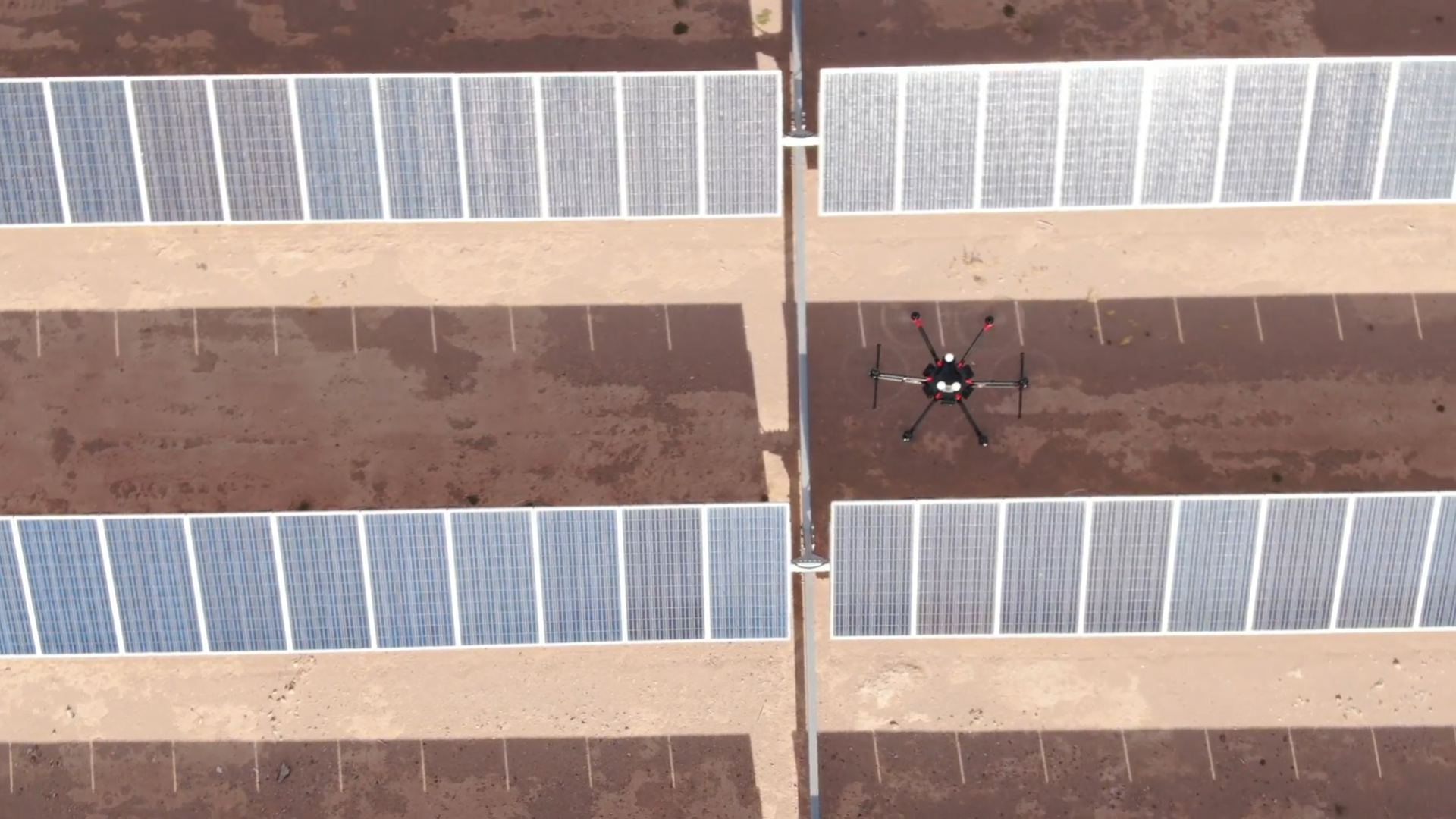
Some examples of related drone-based work include:
- Solar panel inspections—Searching for flaws or damages in solar panels using aerial thermography.
- Wind turbines—Using aerial data to assess the condition of wind turbines.
- Power lines—Searching for cut or damaged power lines using aerial data.
- Pipelines—Finding leaks or cracks in pipelines using aerial data.
- Inspect stations, support beams, and other infrastructure associated with the items mentioned above using aerial data.
11. Drone Operator Jobs in Telecommunications
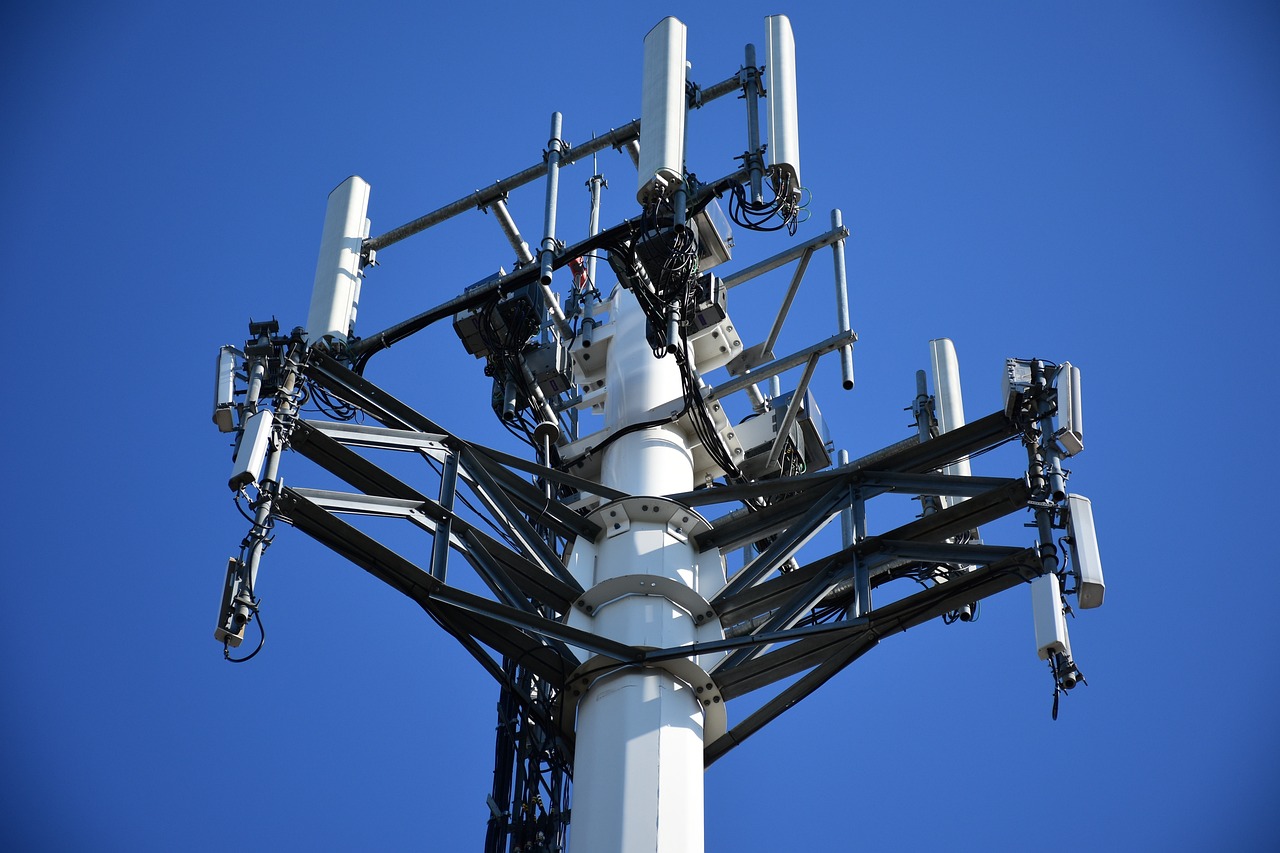
Drone operators are transforming the way inspections are conducted in the telecommunications industry. Instead of sending a person up the tower, operators use drones to conduct surveys and inspections in a fraction of the time. This not only saves costs but also ensures safety.
The use of drones in the telecommunications industry is rapidly expanding, with their applications ranging from cell tower inspection and network maintenance to equipment installation.
It’s vital to understand what to check for when performing cell tower inspections and surveys.
AT&T has been employing drones for cell tower inspections for a while now, and Verizon sees a lot of potential in the drone sector that they bought Skyward, a drone firm, in 2017.
The electromagnetic radiation given off by communication towers can cause your drone to crash if you fly too close (i.e., closer than 100 feet). It’s important to be a highly competent pilot and be able to snap photos from a long distance (using Zoom) to work as a telecommunications UAV operator.
One of the main advantages of using drones for telecommunications is that it allows workers to access hard-to-reach areas without putting themselves in danger. For example, instead of climbing,g a cell tower to inspect it for damage, a drone can do the same job much more quickly and safely.
In addition, you can also use drones to transport small parts and equipment to remote locations, saving time and money.
As the use of drones in the telecommunications industry continues to grow, there will be an increasing demand for qualified drone operators.
Merits and Demerits of Choosing the Telecommunication Industry
Let’s understand the pros and cons of being a drone operator in the telecommunication industry.
| Merits | Demerits |
| 1. Using drones keeps workers safe on the ground, away from dangerous heights or tough spots. | 1. Drone pilots need to be careful that their drones don’t accidentally disrupt the telecom signals. |
| 2. Drones can take detailed pictures and videos, helping figure out what parts of the network might need a boost or fix. | 2. Telecom tech changes fast, so drone pilots need to keep learning new stuff to stay up to date. |
| 3. Spotting problems with drones means fixing things faster and cheaper, without having to send out lots of people to check. | 3. Some telecom sites are way out there or hard to get to, needing really good flying skills and drones that can handle the trip. |
Type of Drone Operator Jobs in the Telecommunication Industry
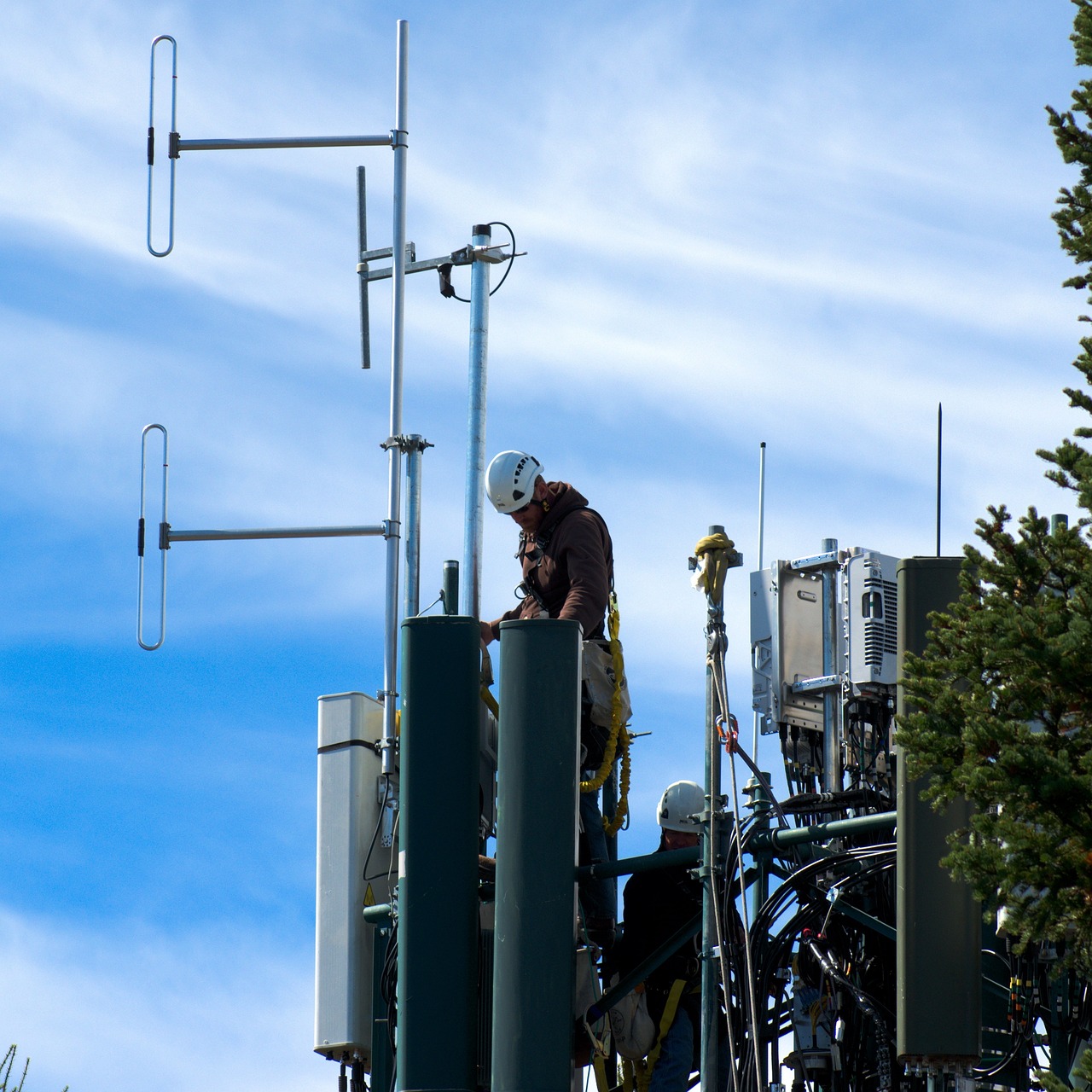
Telecommunications work offers a variety of opportunities for UAS pilots. Some of the most common types of missions that drone operators fly in this field include:
- Cell tower inspections
- Network maintenance
- Radio tower inspections
- Equipment installation
Whether you are interested in dock management, emergency services, or environmental resource protection, there are many exciting opportunities available for UAS pilots like you in the telecommunications industry.
12. Drone Jobs in Education
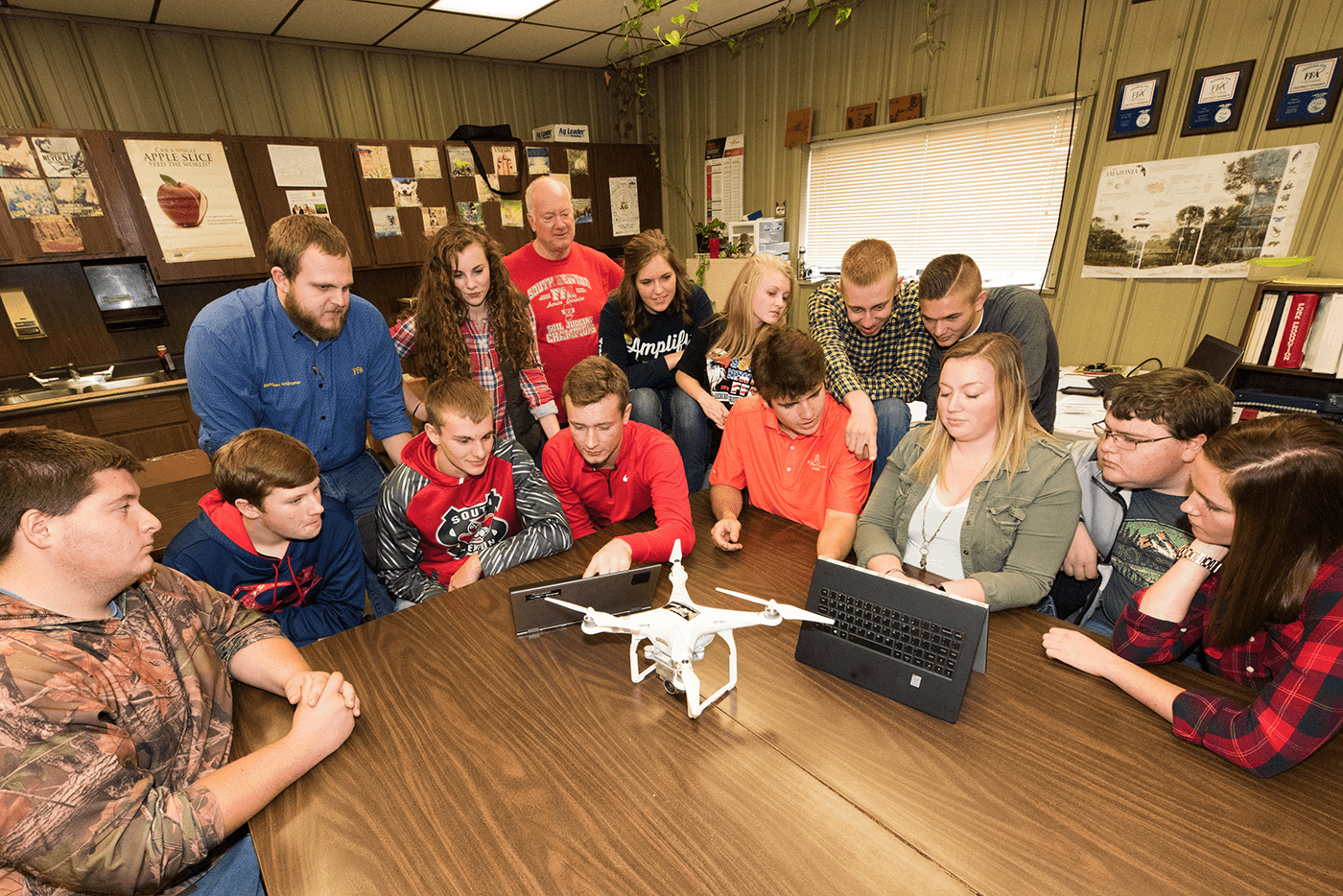 Credit: FFA
Credit: FFA
As a drone pilot, you have the unique opportunity to use your skills and knowledge to make a positive impact on education.
Whether you are supporting classroom learning with new technology or performing research that advances our understanding of educational practices and trends, there are many ways for UAV pilots to contribute to this industry. UAVs offer versatile applications for a wide range of instructional topics that cater to the interests of both instructors and students.
In science, technology, engineering, and mathematics (STEM), the use of unmanned aerial vehicles (UAVs) has grown. This implies that UAV training should be incorporated into STEM education at a greater rate.
A few common roles for drone operators in this field include providing support for classroom instruction, conducting research on educational practices, and developing new applications for UAS technology in this industry.
A recent study in Michigan found that only 37% of 131 surveyed secondary agriculture, food, and natural resources teachers had incorporated UAVs into their curriculum. This was attributed to a lack of subject familiarity or access to technology because of funding constraints.
Regulations for UAVs restrict who can legally fly a UAV and the flight location. For example, in the United States, the Federal Aviation Administration (FAA) requires all UAVs over 0.55 pounds to be registered, and the UAVs must be flown at or below 400 feet within sight of the pilot.
While educational drone flights are exempt from additional restrictions under rule 14 of the Code of Federal Regulations (CFR) Part 107, all students must complete an aeronautical knowledge and safety course and pass The Recreational UAS Safety Test (TRUST), which is available online at no cost.
The following are some of the top college drone programs that we’re aware of:
- Middle Tennessee State University
- Embry-Riddle Aeronautical University
- Kansas State Polytechnic
- University of North Dakota
Merits and Demerits of Choosing the Education Industry
Bringing drones to schools and colleges can make learning fun and prepare students for the future. Here are the pros and cons of bringing drones into the education industry.
| Merits | Demerits |
| 1. Engaging educational tools for STEM subjects, offering hands-on learning experiences. | 1. Budget constraints may limit access to drone technology and training resources in educational institutions. |
| 2. Facilitates field research and environmental studies through aerial observation and data collection. | 2. Safety concerns and regulatory compliance issues in integrating drones into educational curricula. |
| 3. Enhances creativity and problem-solving skills through drone programming and mission planning activities. | 3. Limited opportunities for hands-on flight experience due to airspace restrictions and liability concerns. |
| 4. Provides practical applications for geography, mapping, and surveying concepts through drone technology. | 4. Technical challenges in drone maintenance, repair, and troubleshooting may disrupt educational activities. |
13. Emergency Response Drone Operations
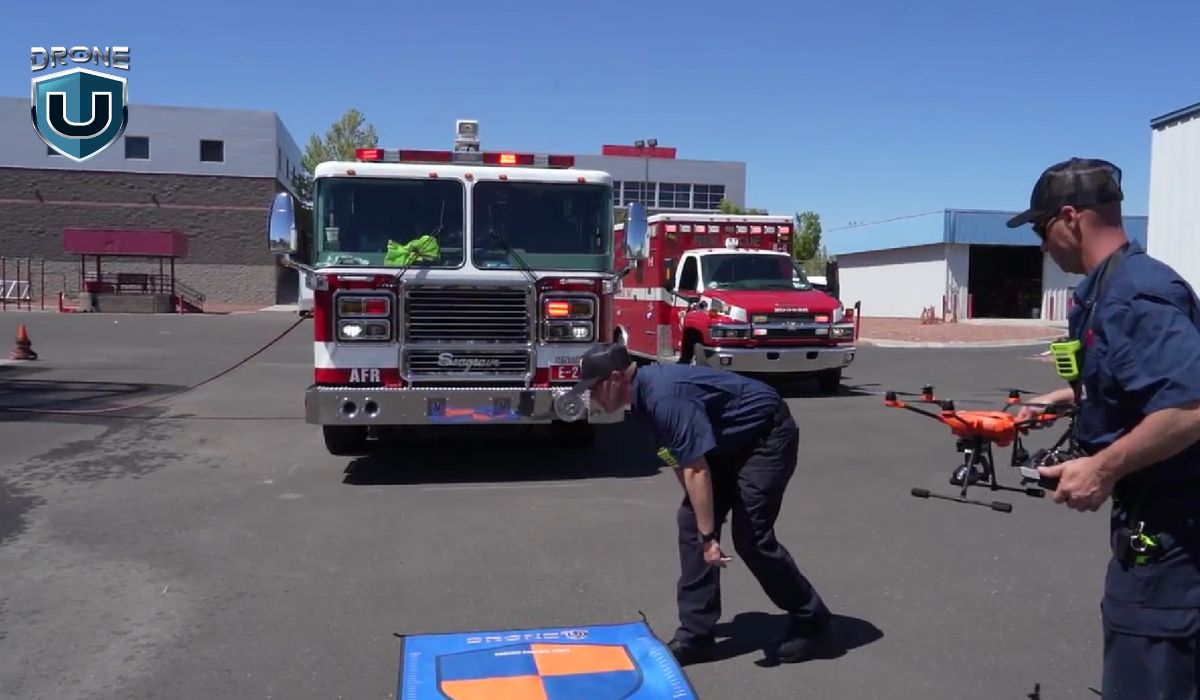
Generally, emergency response organizations use drones for critical search and rescue missions, disaster assessment, and real-time situational awareness. This helps them respond faster and more effectively to emergencies while keeping responders safe.
Typically, emergency response teams receive multiple calls during natural disasters, accidents, or search operations in a particular area. In the past, they would rely on helicopter support or ground teams, which could take hours to mobilize and were often limited by terrain and visibility.
However, with the use of drones, a skilled drone pilot can deploy within minutes and provide immediate aerial intelligence. Using thermal cameras and high-resolution imaging, they can search large areas in 1-2 hours and provide real-time data to ground teams.
This type of work is crucial and in growing demand, as it provides immediate situational awareness while reducing risks to emergency personnel.
Merits and Demerits of Choosing Emergency Response
Let’s break down the pros and cons of using drones in emergency response in a super simple way.
| Merits | Demerits |
| 1. Direct involvement in life-saving operations and ability to make an immediate impact in critical situations | 1. High-stress working conditions with the pressure of time-critical missions affecting decision-making |
| 2. Access to advanced technology including thermal imaging and specialized rescue equipment | 2. Irregular working hours with on-call requirements impacting work-life balance |
| 3. Rapid career advancement opportunities due to the growing adoption of emergency services | 3. Weather dependencies limiting operation capabilities during adverse conditions |
| 4. Development of diverse skill sets across multiple types of emergency scenarios | 4. Complex regulatory compliance requirements for emergency operations in restricted airspace |
Applications of Drones in Emergency Response
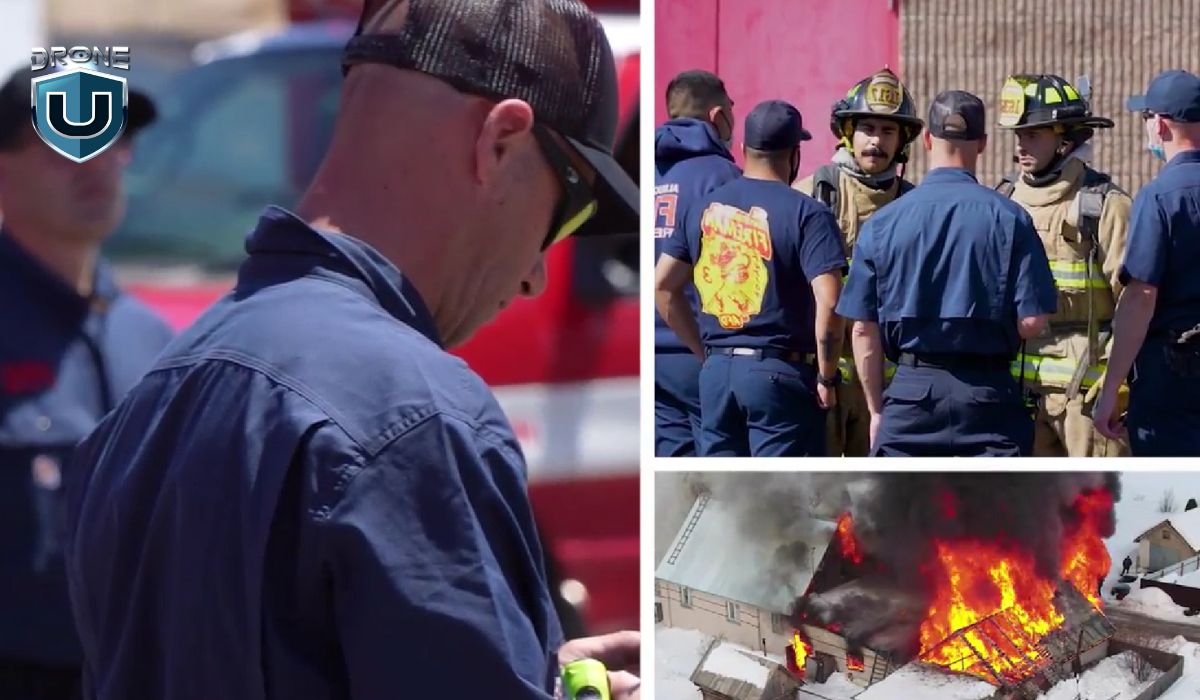
Some of the most common types of missions include search and rescue operations, disaster assessment, fire monitoring, and emergency supply delivery.
- Search and rescue missions involve flying drones equipped with thermal cameras to locate missing persons in various terrains and weather conditions.
- Disaster assessment missions involve rapid mapping of affected areas to guide emergency response teams and assess damage extent.
- Fire monitoring missions help track wildfire spread and identify hotspots using specialized thermal sensors.
- Emergency supply delivery missions involve transporting critical medical supplies or equipment to hard-to-reach locations.
Overall, UAV pilots play a crucial role in emergency response by providing rapid aerial support, enhancing situational awareness, and supporting ground teams with real-time intelligence.
Many emergency response organizations offer specialized training programs or partnerships with drone operators that can help you build experience in this critical field.
14. Healthcare Logistics Drone Operations
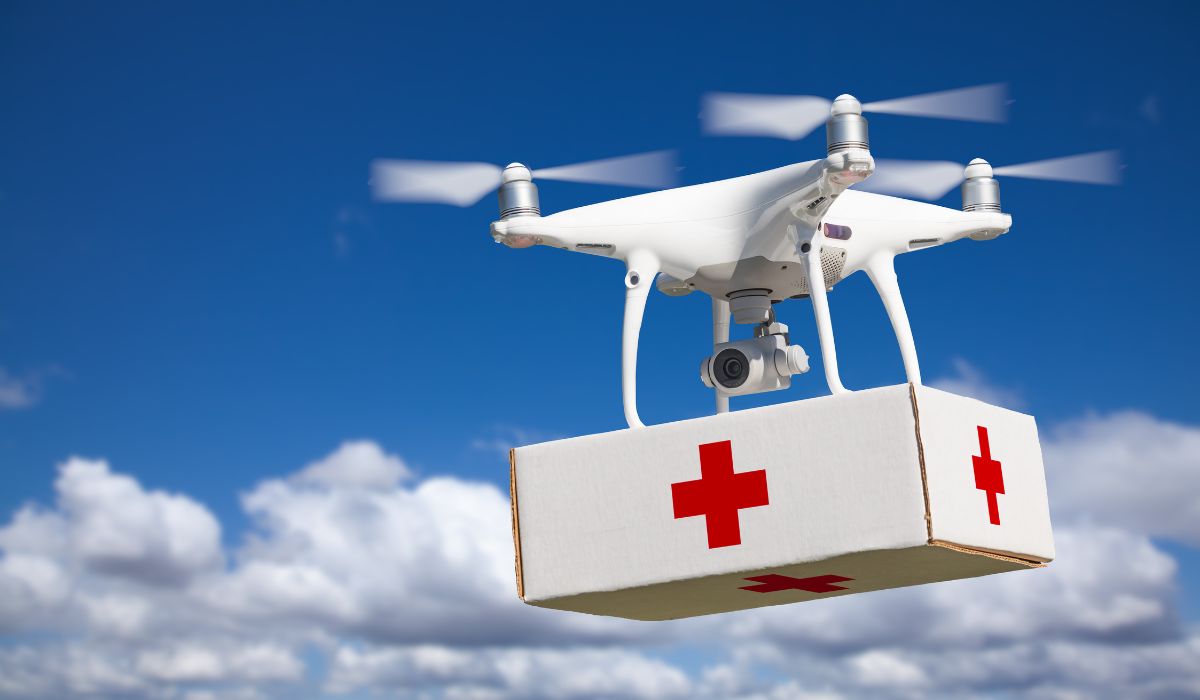
The global medical drone market size is projected to grow from USD 1.47 billion to USD 4.68 billion by 2032.
Generally, healthcare organizations use drones for transporting medical supplies, blood samples, and vaccines between facilities. This helps them deliver critical medical items faster and reach remote locations more efficiently.
Typically, healthcare facilities often need urgent deliveries of medical supplies, blood samples, or vaccines across different locations. In the past, they would rely on ground transportation or expensive helicopter services, which could be delayed by traffic or limited by accessibility.
However, with the use of drones, a skilled drone pilot can transport critical medical supplies in minutes rather than hours by flying predetermined routes while maintaining required medical transport conditions.
This type of work is essential and increasingly in demand, as it provides rapid medical logistics solutions while reducing delivery costs and improving healthcare access.
Merits and Demerits of Choosing Healthcare Logistics
Let’s break down the pros and cons of using drones in healthcare logistics in a super simple way.
| Merits | Demerits |
| 1. Direct contribution to saving lives through rapid medical deliveries and improved healthcare access | 1. Strict regulations and protocols for handling medical supplies requiring specialized certifications |
| 2. Regular working hours with predictable flight schedules and routes | 2. High responsibility for maintaining temperature-controlled conditions during transport |
| 3. Growing demand in both urban and rural healthcare settings | 3. Limited payload capacity affecting the types of medical supplies that can be transported |
| 4. Opportunity to work with advanced delivery systems and tracking technology. | 4. Need for backup plans and redundancy systems in case of technical issues |
Applications of Drones in Healthcare Logistics
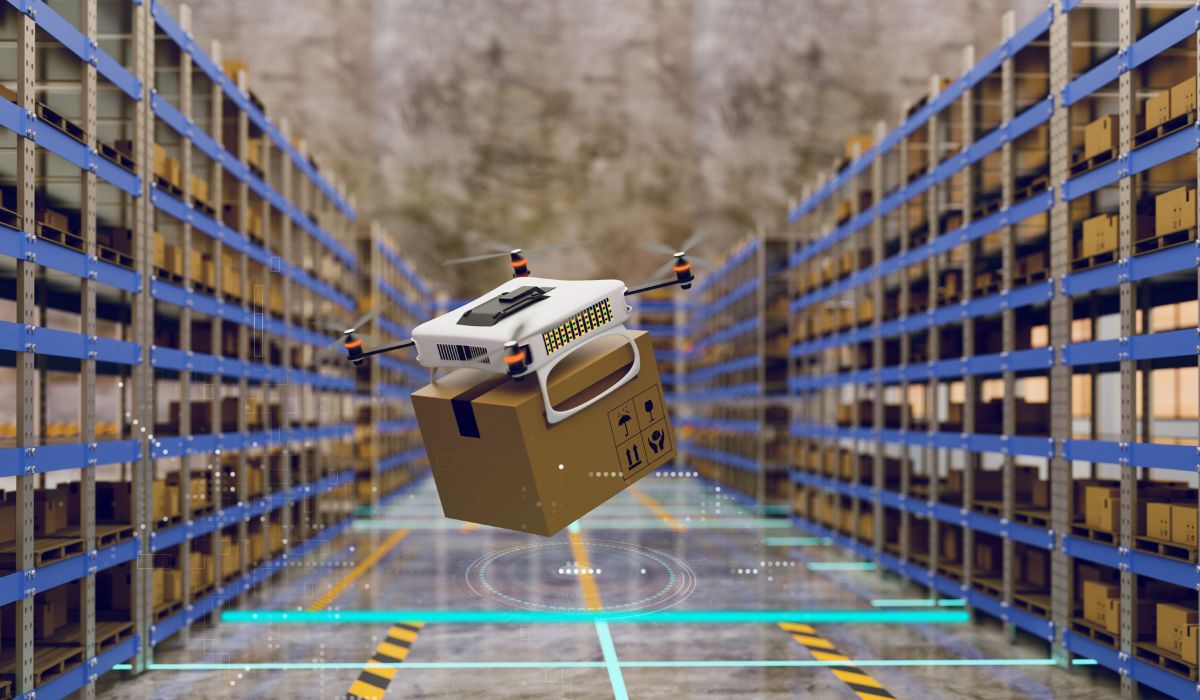
Some of the most common types of missions include medical supply delivery, laboratory sample transport, vaccine distribution, and emergency medical equipment delivery.
- Medical supply delivery missions involve transporting urgent medications, supplies, or small medical devices between healthcare facilities.
- Laboratory sample transport missions require maintaining specific temperatures and handling conditions while moving biological samples.
- Vaccine distribution missions focus on delivering temperature-sensitive vaccines to remote or hard-to-reach locations.
- Emergency medical equipment delivery missions provide critical devices or supplies during urgent situations.
Overall, UAV pilots play a vital role in healthcare logistics by ensuring rapid and reliable delivery of medical supplies, improving patient care, and expanding healthcare access.
Many healthcare organizations offer specialized training in medical transport protocols and handling procedures that can help you develop expertise in this growing field.
15. Urban Planning Drone Operations
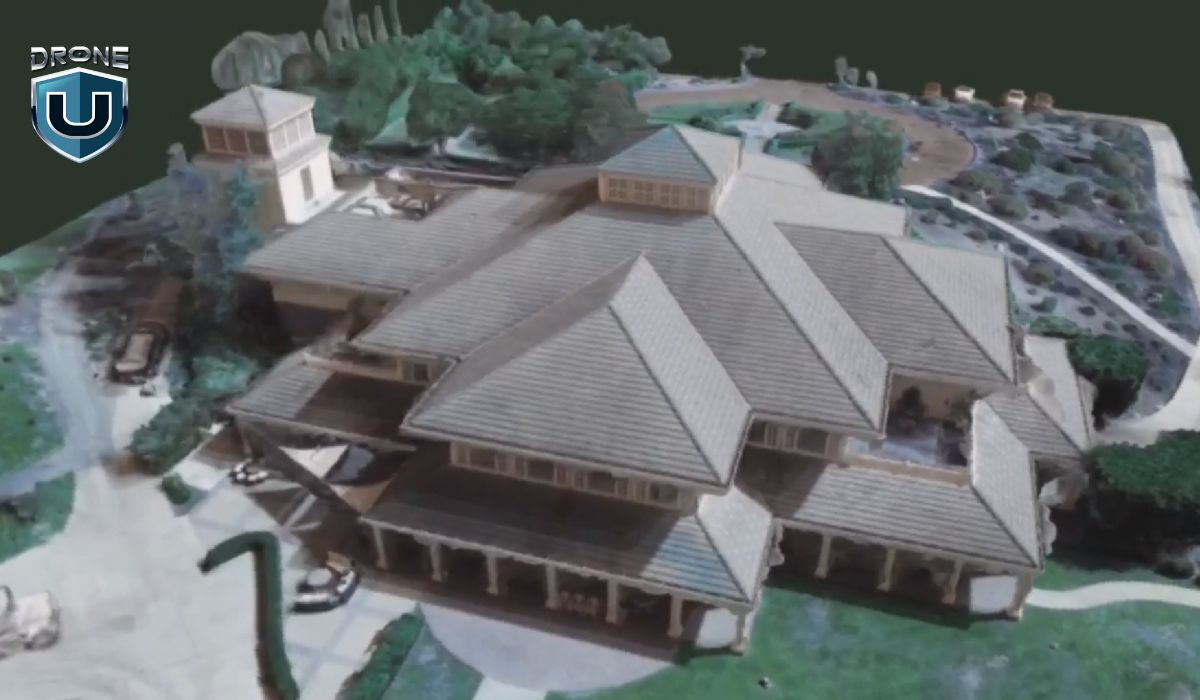
Urban planning departments use drones to create detailed 3D maps, inspect infrastructure, and monitor urban development. This helps them make better decisions about city planning and development.
Typically, city planners need comprehensive data about urban areas for development planning and monitoring. In the past, they would rely on outdated satellite imagery or time-consuming ground surveys, which provided limited perspectives and incomplete data.
However, with the use of drones, a skilled drone pilot can map entire neighborhoods in a single day, creating detailed 3D models and collecting real-time data that enables better urban planning decisions.
This type of work is increasingly vital and in steady demand, as it provides accurate, up-to-date information for smart city development.
Merits and Demerits of Choosing Urban Planning
Let’s break down the pros and cons of using drones in urban planning in a super simple way.
| Merits | Demerits |
| 1. Stable work environment with regular hours and planned project schedules | 1. Complex data processing requirements needing specialized software knowledge |
| 2. Opportunity to contribute to long-term city development and improvement | 2. Restricted flight zones in urban areas requiring additional permits |
| 3. Integration with emerging smart city technologies and planning tools | 3. Project delays due to weather conditions or air traffic restrictions |
| 4. Diverse project portfolio across different urban environments | 4. High accuracy requirements for mapping and modeling data |
Applications of Drones in Urban Planning
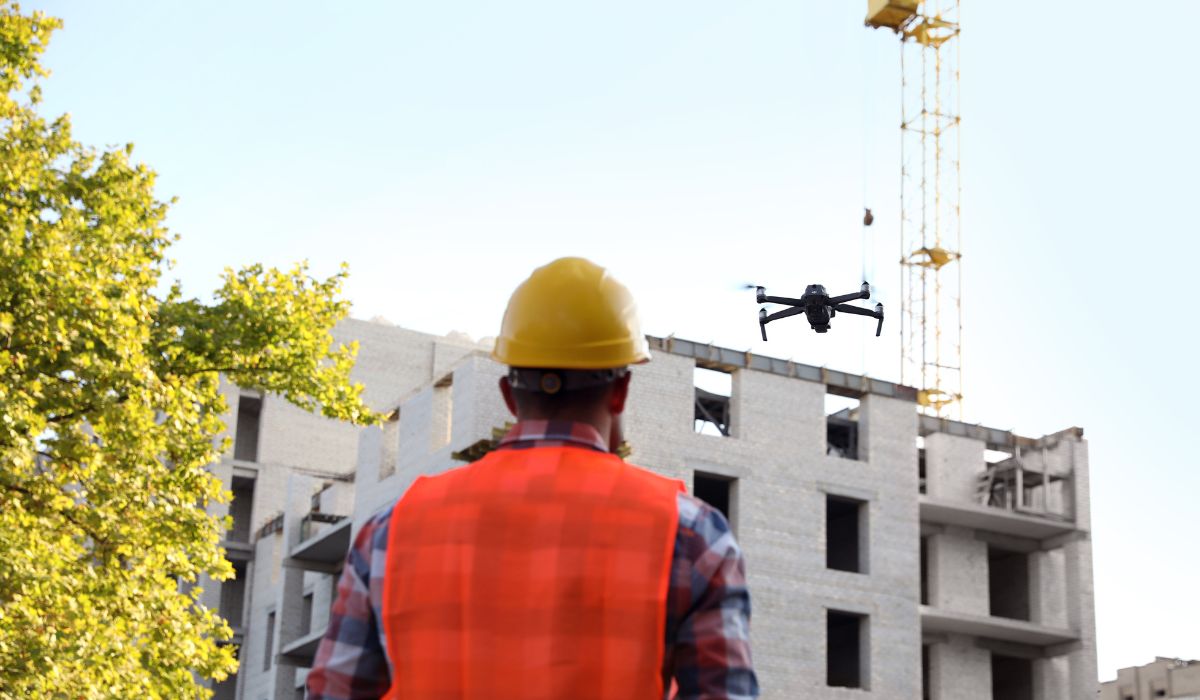
Some of the most common types of missions include urban mapping, infrastructure inspection, development monitoring, and environmental assessment.
- Urban mapping missions involve creating detailed 3D models of city areas for planning and development purposes.
- Infrastructure inspection missions focus on examining buildings, roads, and utilities for maintenance planning.
- Development monitoring missions track construction progress and ensure compliance with planning regulations.
- Environmental assessment missions collect data about urban green spaces, water bodies, and environmental impact.
Overall, UAV pilots play an important role in urban planning by providing accurate data for smart city development and helping planners make informed decisions about urban growth.
Many urban planning departments offer internship opportunities or collaborative projects that can help you gain experience in this specialized field.
Apps / Curriculum Resources for Using Drones in the Education Field
There are a variety of apps and curriculum resources available for drone pilots looking to use their skills.
Some popular options include the Drone U Flight School app, which helps students prepare for the FAA Part 107 exam, and the Aerial Robotics Curriculum, which provides detailed lesson plans and activities for teaching drone technology in the classroom.

Other useful resources include DroneBlocks, which provides STEM and practical application of drone technology through apps, drone coding curriculum, simulator, and professional development. The DroneDeploy app allows users to generate and share 3D maps and models, and the Flight Projector app enables users to project a live feed of their drone’s camera onto a classroom screen.
In the following sections, you will find some valuable information on drone pilot earnings and recommendations on drones & software based on the industry.
Earning Potential in Drone Pilots Jobs as Per Industry
| Industry | Earning |
| Real Estate | $80,957 |
| Construction | $78,110 |
| Mining and Aggregate | $78,110 |
| Filmmaking | $78,110 |
| Public Safety | $49,000 |
| Insurance | $94,051 |
| Journalism | $35,000 |
| Agriculture | $77,123 |
| Transportation | $78,110 |
| Energy | $61,000 |
| Telecommunications | $75,849 |
| Education | $69,351 |
Check out this article to get more info on Drone Pilot Salary
Recommendations for UAV Pilot Jobs Based on Industry
| Industry | Suggested Drone |
| Real Estate | DJI Mavic 3, DJI Phantom 4 Pro V2.0 |
| Construction | DJI Mavic 2 Pro, Yuneec’s H520, ZeroZero V-Cptr Falcon |
| Mining or Aggregates | DJI Mavic 2 Pro, DJI Matrice series |
| Film Industry | DJI Inspire 2, DJI Phantom 4 Pro V2.0, Mavic 3, and FreeFly Alta |
| Public Safety Industry | Parrot ANAFI USA, DJI Mavic 2 Enterprise Advanced, DJI Matrice 300 RTK, DJI’s Matrice 300 |
| Insurance Field | Mavic 2 Zoom, DJI Mavic 2 Pro, Yuneec Typhoon H, and the DJI Phantom 4 Pro |
| Journalism Industry | DJI Mavic 3, Inspire 2, FreeFly Alta, the Parrot Disco, and the Yuneec Typhoon H520 |
| Agriculture | DJI Agras T40, DJI Agras MG-1, SenseFly eBee SQ, DJI Drone with NDVI Camera, Sentera’s NDVI Single Sensor |
| Transportation Industry | Yuneec Q500 Typhoon 4K, Yuneec H520, DJI Phantom series, and DJI Matrice 300 |
| Energy Industry | Skydio X2, Inspire 2 with Zoom lens, Yuneec Typhoon H520, DJI’s Phantom 4 Pro V2.0, DJI Matrice 300, and Parrot Bebop 2 FPV |
| Telecommunication Industry | DJI Phantom 4, DJI’s Matrice 300 |
| Education Field | DJI Phantom 4 Pro V2.0, the DJI Mavic 3, the Mavic Air 2, and the DJI Tello |
Check out our recommendations on DJI Drones based on the industry here.
Drone Software Recommendations for UAV Pilot Jobs Based on Industry
| Industry | Suggested Software |
| Real Estate | DJI Go4, Litchi, UAV Forecast and 3DR Site Scan |
| Construction | Pix4Dcapture, DJI Terra, Propeller, DroneDeploy, and Site Scan |
| Mining or Aggregates | Propeller, Delair.ai, Pix4Dmapper, DroneDeploy, and Site Scan |
| Film Industry | Adobe After Effects, Final Cut Pro, Adobe Premiere Pro, and DroneDeploy |
| Public Safety Industry | DJI Terra, Pix4DMapper, DJI GS Pro, Agisoft, and the DroneDeploy |
| Insurance Field | Pix4D and DroneDeploy |
| Journalism Industry | DJI GO app, the FreeFlight Pro app, and the Litchi app |
| Agriculture | Pix4D, DroneDeploy, PrecisionHawk, and Sentera |
| Transportation Industry | DroneDeploy, Pix4Dcapture, Propeller, Wingtra |
| Energy Industry | DroneDeploy, PrecisionHawk, Auterion, PhotoScan |
| Telecommunication Industry | DroneDeploy, Optelos, PrecisionHawk, Pix4D |
Frequently Asked Questions
1. Is becoming a drone pilot worth it?
Yes, becoming a drone pilot is worth it because the field of drone piloting provides a diverse range of drone operator job prospects across various industries, ensuring a dynamic and fulfilling career path.
2. Is there a demand for drone pilots?
Yes, there is a significant demand for drone pilots across various industries. As drones become more prevalent and their applications expand, the need for skilled pilots continues to grow.
3. How do I become a certified drone pilot?
To become a certified drone pilot, it is essential to have a complete understanding of the process and requirements. We have created a detailed guide that will provide you with valuable information and insights into the certification process. You can access the drone license guide by visiting this link.
Sources & References:
- Glassdoor: https://www.glassdoor.com/Salaries/drone-pilot-salary-SRCH_KO0,11.htm
- 107 BVLOS Waivers: https://www.faa.gov/sites/faa.gov/files/uas/resources/events_calendar/archive/How_To_Get_Approval_to_Fly_BVLOS-Part_107.pdf
- Drone Pilot Salary: https://www.thedroneu.com/blog/drone-pilot-salary-how-to-make-money-with-a-drone/
- Drone Laws: https://www.thedroneu.com/blog/usa-drone-laws-regulations-by-state/






